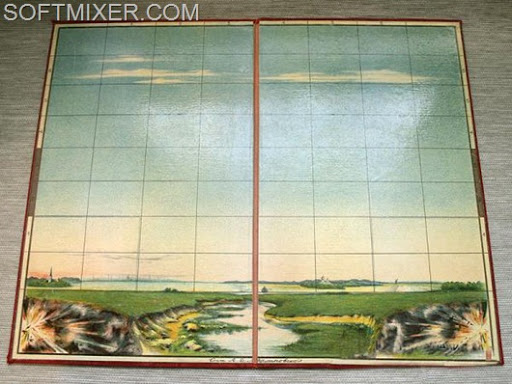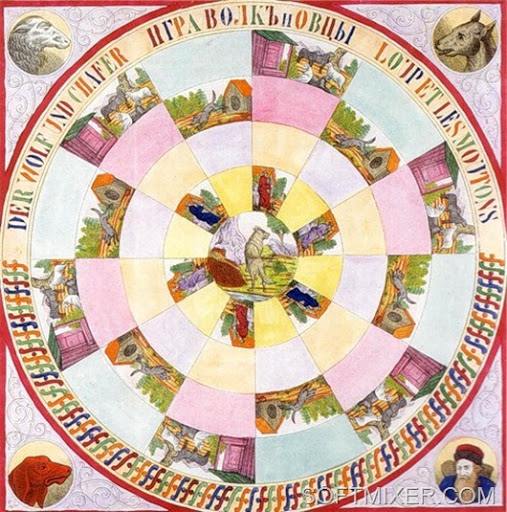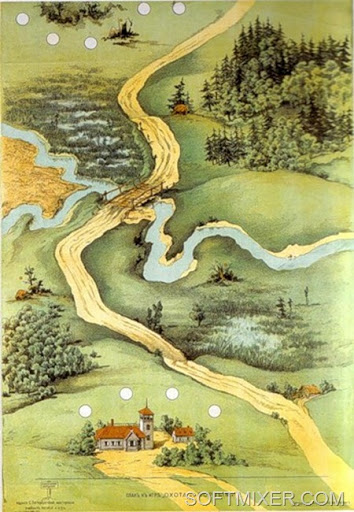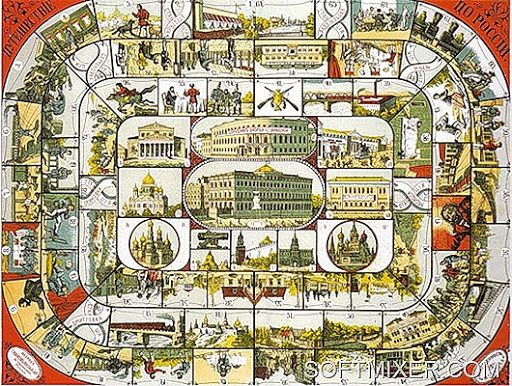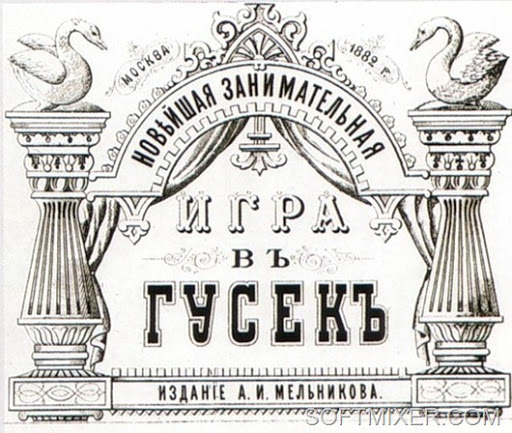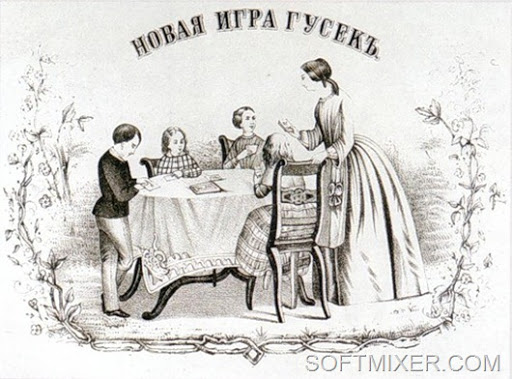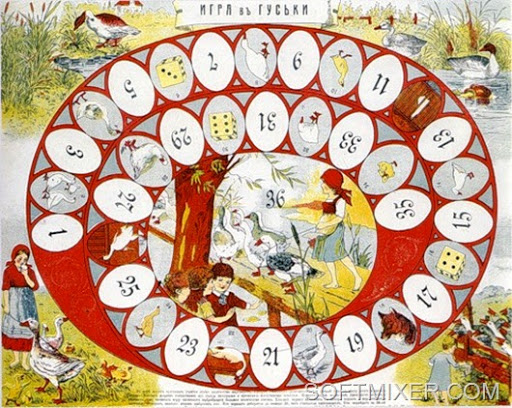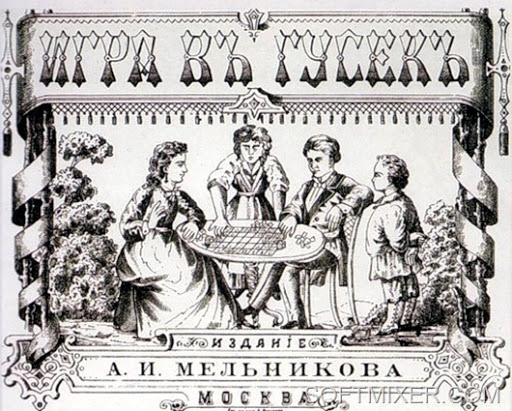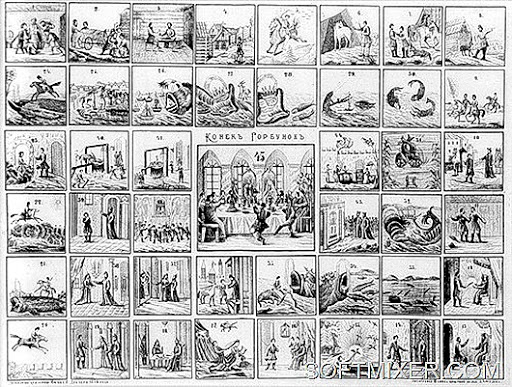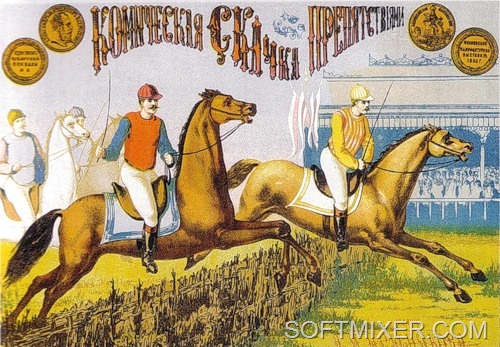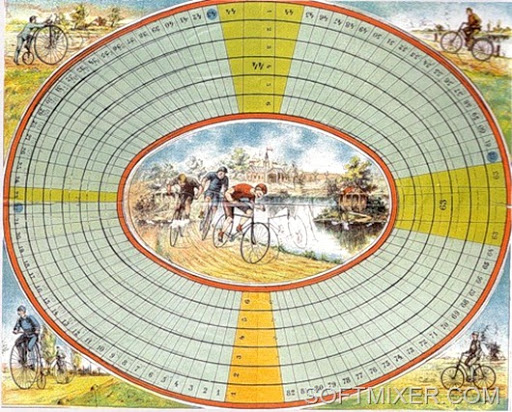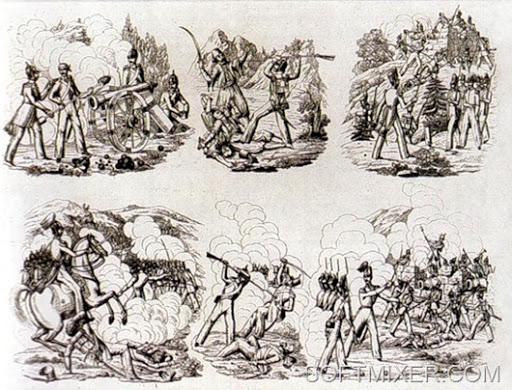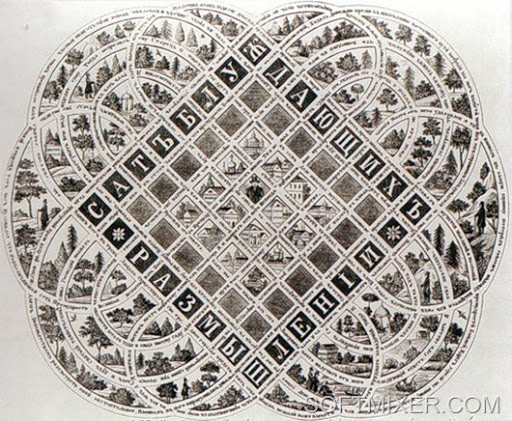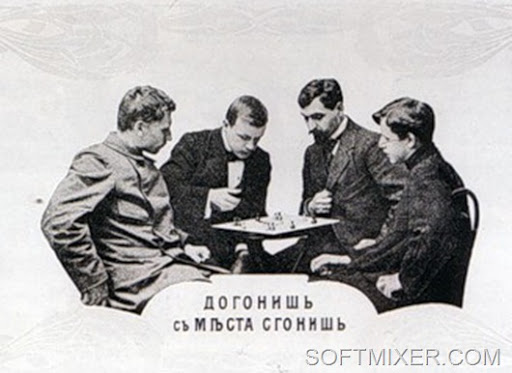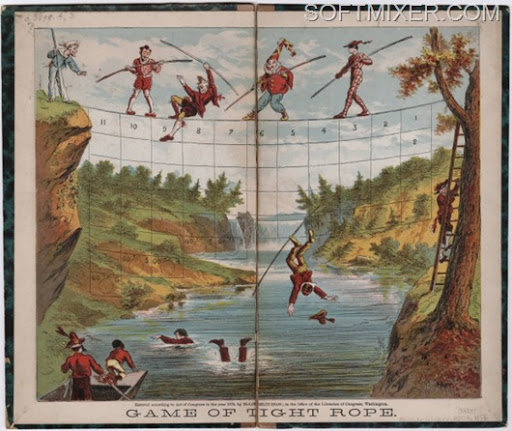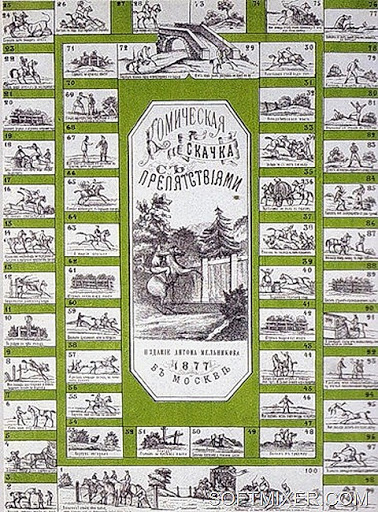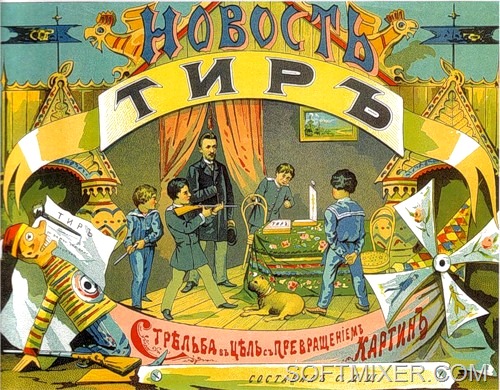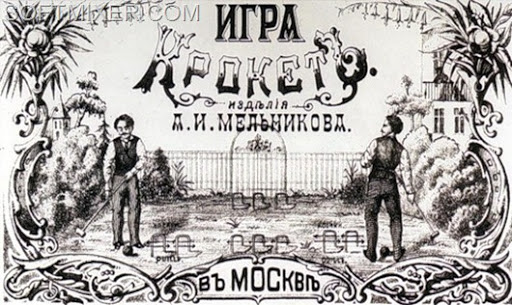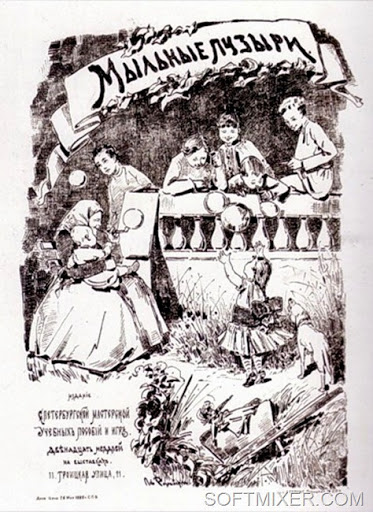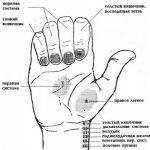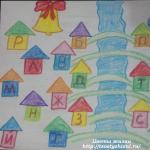The best board games of the USSR. Our board games
Today's series will be devoted to board games. It was these games that replaced us with the absence of computer entertainment during the USSR. Now, looking at them from the height of his age, it becomes completely incomprehensible how such a technical primitive could immerse players into the process of the game with great force.
Every Soviet child had at least 3-4 board games in a wide variety of formats. But even this was enough to get excited for a long time and compete with whole yards for the title of the main champion in this topic.
It is hard for me to convey all the passions going on around such games. While playing games we shouted, argued, fought, made friends, quarreled, laughed and all at the same time.
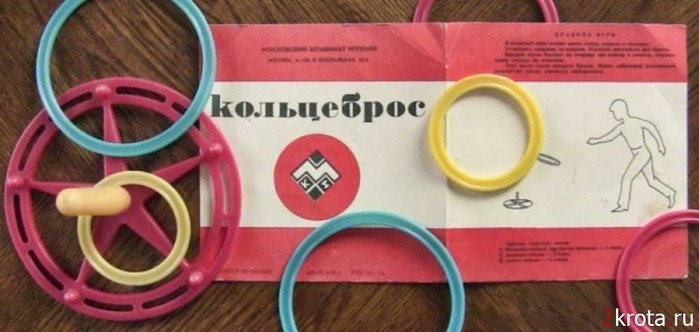
Usually the games involved the participation of two and more players, which contributed to the development of collective communication. Let us assume that in kindergarten, respect for their peers had to be earned, but as soon as some board game was brought there from an unusual category, the whole group immediately stuck for a long time.
An excellent example of such a game was “Hippo”. The game is mercilessly ripped off by our industry from America. The fact is that after many years, I was surprised to find this game in one of the films where American schoolchildren were engrossed in it.
The very meaning of the game is very simple.
4 people participate in the game, a lot of balls get enough sleep in the middle of the field and for the hippos to start eating the balls, it was enough to press the lever on the back. The more balls you eat, the cooler.
In general, mass hysteria began in the kindergarten that day, everyone wanted to play at it, while for the right to turn there were serious battles. Basically, of course, among the boys, since the girls could correctly twitch the scythe by eliminating, so the competition. The result of the first day was a lot of abrasions and broken noses. Nevertheless, everyone was happy. Believe it or not, there was only a week left until the summer break, which lasted until the game of hippo was so long. After the appearance of the game, nobody wanted to leave kindergarten.
Then, by some miracle, I discovered this game on the counters of the “children's world”, after several massive brain attacks, my grandfather gave up and bought it.
I solemnly brought out the box with the game into the courtyard for which the parents of my friends had to say thank you to me, we almost spent the night in the courtyard - so they were cut.
Here actually photos of this miracle of the Soviet production:
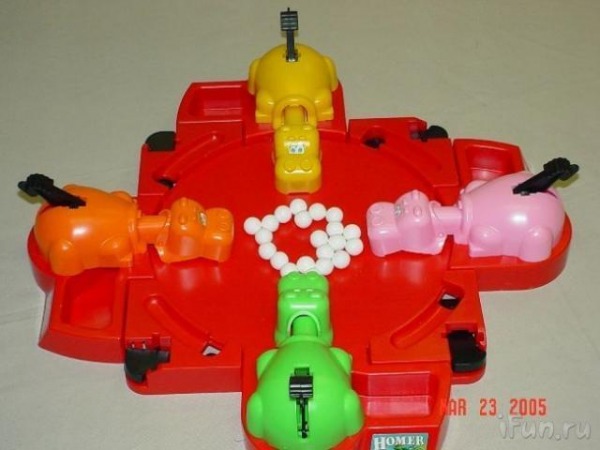
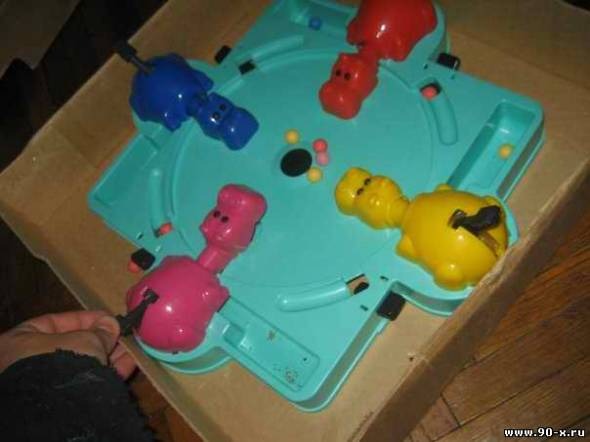
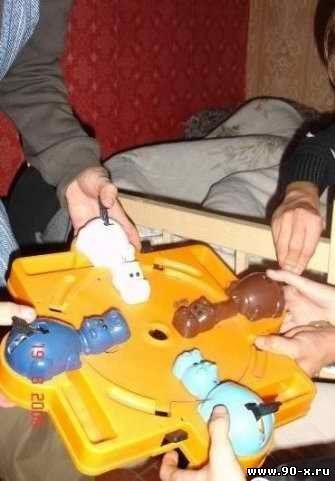
One of the epic and undoubtedly legendary games of our childhood has become an electronic game on batteries "Behind the wheel".
She was an interactive auto simulator. In fact, the prototype of modern computer racing only in the super present 3-D version.
It was a platform with a circular motion imitating part of the highway, which is divided by obstacles in the form of bridges. The front panel of the game imitated the controls of the car. Almost real steering wheel, dashboard and start with the key! A small plastic machine was controlled with a magnet connected to the steering wheel, the speed was increased using a lever simulating a gearbox. The goal of the game was to skillfully drive a car in order to squeeze through narrow passages of bridges.
The game was so popular that lined up a huge queue of people willing to ride in this way. I remember that my grandmother bought me the same game, but while we were on vacation with her in the village, the machine was mercilessly lost .. I am afraid I cannot describe the full scale of this drama. It was necessary to adapt the weak imitation of everything that might resemble a weakly similarity of a typewriter. But a week later, a miracle happened, the same bus driver drove to the house and handed the car. It turns out he found it among the passenger seats, asked the locals where the grandmother lived and brought. And this is true, to be honest, I then hardly believed in the reality of what was happening, and faithfully believed in the victory of communism in all the earth.
The only drawback of the game was the batteries, they ended up terribly fast with pedantic cruelty, traumatic for the child's psyche. But children's enthusiasm did not end. The boys immediately shared on those who turn the circle manually and who controls the machine.
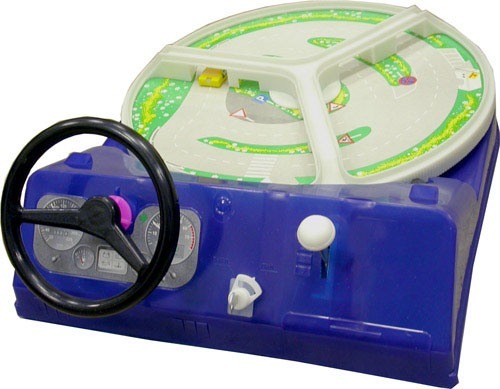



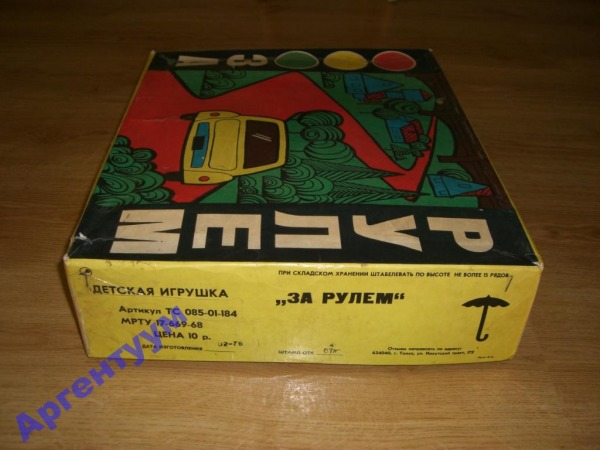
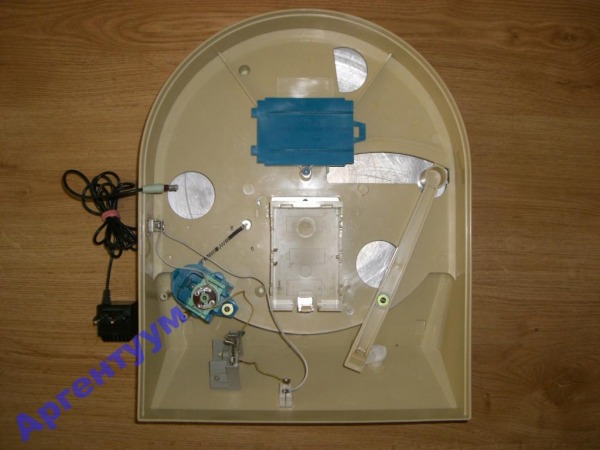

Another of the most legendary games on batteries of that time was a game called "MotoTrack". It was quite expensive (about 25 rubles), and operated exclusively at home.
It was a winding road that was assembled in parts, the main component of which was a moving lift. Four plastic motorcyclists were running on the road on rollers and, thanks to the inertia and the special slope of the road, they rolled down to the lift, which, as if an escalator, lifted them to a new round of the road. After the lap was completed, a counter measuring the number of final rounds worked. Naturally, those who quickly pass and won. The game delivered an amazing process automation and fascinating assembly of the track itself.
The track could be further expanded with a second moto track.
The game itself made an indelible impression on the gameplay participants, and caused genuine envy of those who were fortunate enough to be the owner of this miracle. I had 3 such games, of course, not in a row, but as the parts of the road and the elevator itself stay, because when the batteries ran out and the game got tired, the elevator could be used for parts. Naturally, though he was going back, he did not work for some reason. Unfortunately, in the vast expanses of the network, I found only one picture of this miracle.
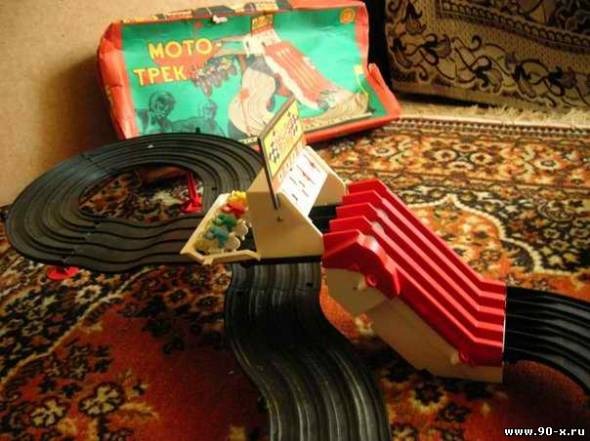
Game "Sea Battle"
When I was 5 years old, at that time we lived with my mother on Mechnikov Street. Next to me lived a neighbor boy who was much older than me, he was 12. At that time, I often visited him to visit him to see what he had interesting things from toys. At that time, there was a fashion for beer caps with drawings from imported bottles, and he had a rather large collection of rarities won during the fights. In addition, on the wall he had black and white pictures from albums by bands such as Iron Maiden, Manovar, Kreeed, Kies, etc. To tell the truth, due to my small age, I didn’t really understand what was good in the pics which depicted skulls and dead people, but under the strong authority of an older comrade, I immediately realized that it was very cool.
Most of all I was interested in his soldiers depicting Neanderthals and Vikings, as well as the technology of making soldiers from colored wire. And then once, to his misfortune, when he needed to hear my endless speech, inadvertently took a dusty box with a game from the cabinet and showed it to me.
That's when I hung up. The game seemed to me something unreal cool, the coolest thing I've seen before.
The game was a platform imitating the sea, with opposite naval towers of naval guns, similar to those on ships.
Along the edges of the platform, mock ships were installed that had to be knocked down with steel balls loaded into guns. A cunning periscope from small mirrors was built into the gun, so the aiming was carried out precisely on it. Won the one who quickly beat the enemy squadron. The more accurate the blow, the more nishtyakov. In general, after what I saw, I slept very badly, I dreamed about the game and the ships. From the next day I stuck to him like a knife in my throat with a request to donate a game.
A week later, he still gave up and my happiness knew no bounds.





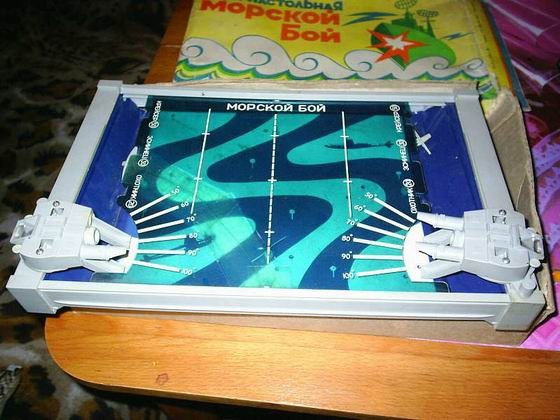
Board game "Basketball"
In my opinion, only Soviet engineers could think of creating such an imitator of a basketball game. She was brutal like all Soviet toys, and besides, such a game could easily have been killed on the spot. Apparently it was developed with the expectation of successful use during hostilities, as an alternative weapon.
The main memories associated with this game are corns on the fingers, no matter how funny it sounds.
The meaning of the game was simple as everything in the USSR. A plastic ping-pong ball was used as a ball. With the help of levers on the springs, the ball was hit. The main goal was to throw the ball in the basket.
I remember how they drew tournament tables for yard competitions. In the finals, as a rule, it was the hardest to play, since the fingers ached with pain and they no longer obeyed their own hand. Excitement was a bunch!
The main disadvantages were corns, breaking a ball and springs weakening over time.
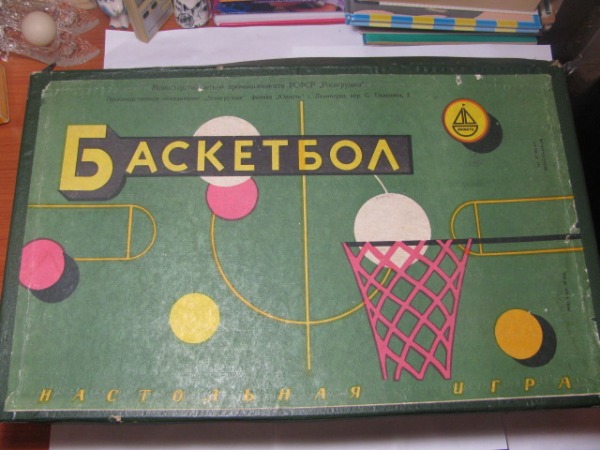

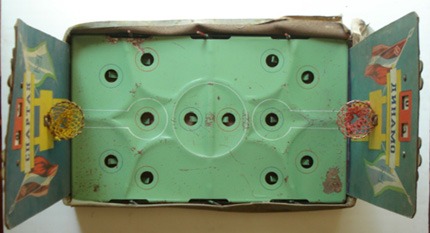
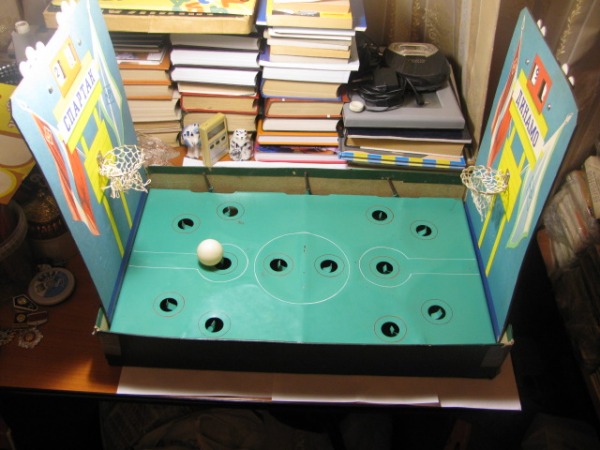

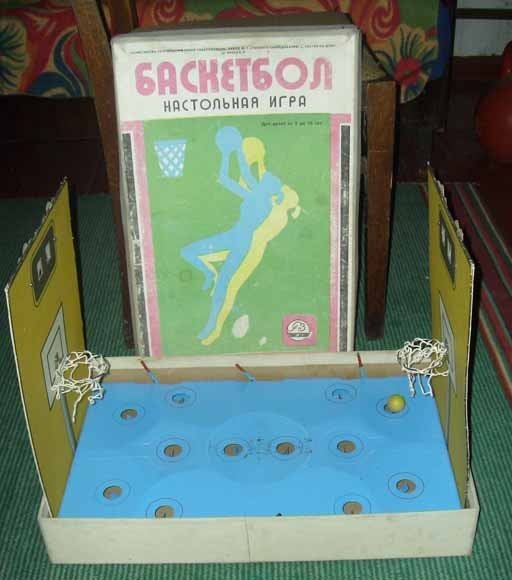
Another one of the rarest games at the time was the “Young Chemist” set. I remember how I was presented by caring relatives in the 5th grade.
Such a set was the object of the fierce envy of absolutely everyone, since it contained chemicals that were quite valuable for that time. If I am not mistaken then the producers of this time bomb were Czechoslovakia.
Perhaps in this way our state wanted to instill the love of schoolchildren in chemistry.
But it seems to me that this only spurred interest in explosive activity.
At first, I honestly tried to carry out the simplest experiments described in the carefully attached little book, until a kid from a neighboring house found out about my treasure. His parents were chemists, naturally he was well versed in all reagents.
I still wonder how we didn’t burn the house, but the surrounding houses have more than suffered from our joint experiments.
A special triumph was the laying of slow-acting explosives in one of the basements of the nearest high-rise building. When it exploded, I thought it was a sinful business that the house had outlived its last hours. But instead of the destroyed walls, they simply flushed out the glasses together with the cats living there. Hiding as partisans on the roof of our unofficial observation post, we only in the evening decided to go out into the courtyard, and honestly tried to squat surprised faces about what had happened.
And the set, by the way, was really valid, a bunch of flasks, a spirit lamp on dry alcohol, different tubes, etc.
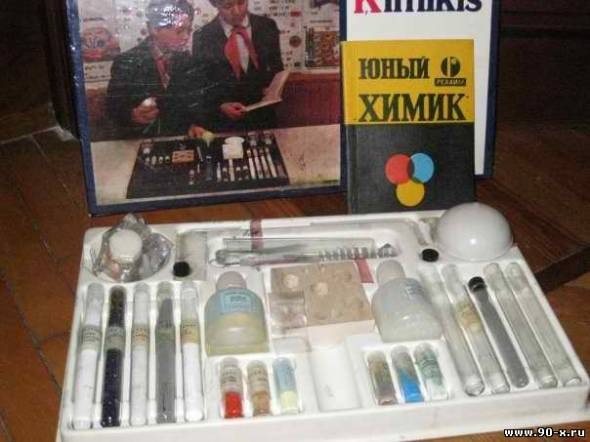
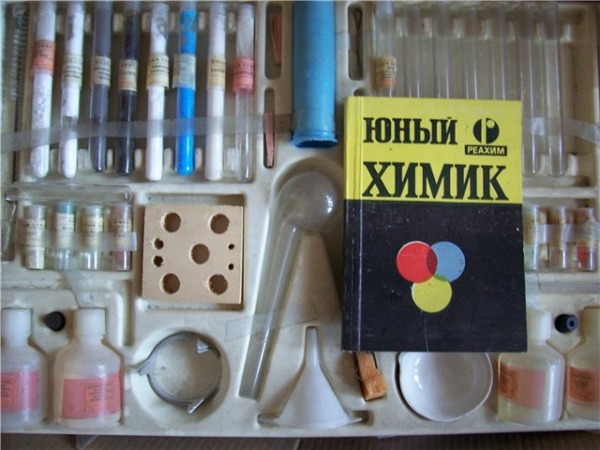
alternative CHEMICALS-Yunny electrician

Board game "Football". In Soviet times, football was sick much more than in our time, apparently mainly due to the fact that in those days, our players still won something. Therefore, the board game of the same name was especially loved. The meaning of the game is very simple, instead of the ball a metal ball was used, which was passed between the players and then hammered into the goal.
Each of the parties controlling almost all the players in turn. The game was released in two versions, the first with the controls on the springs and push-button. Push-button was more convenient, because it allows you to play remotely.
Special battles were held during the World Cup. Passions flared serious, and did not disdain to play the game and high school students.
Actually a toy with spring control:
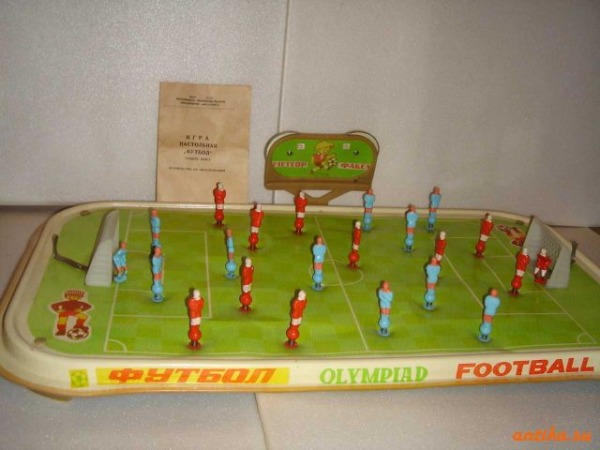
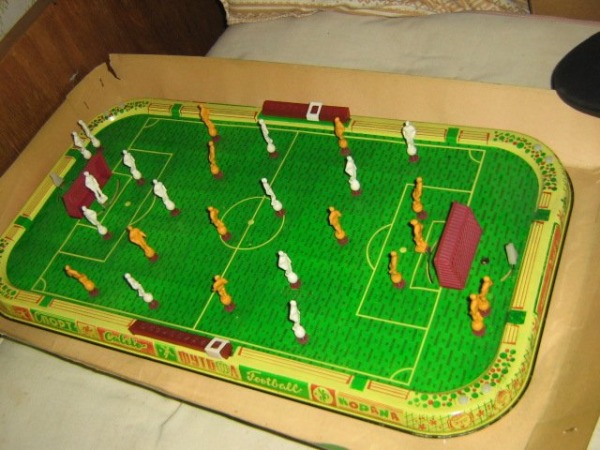

With pushbutton control:

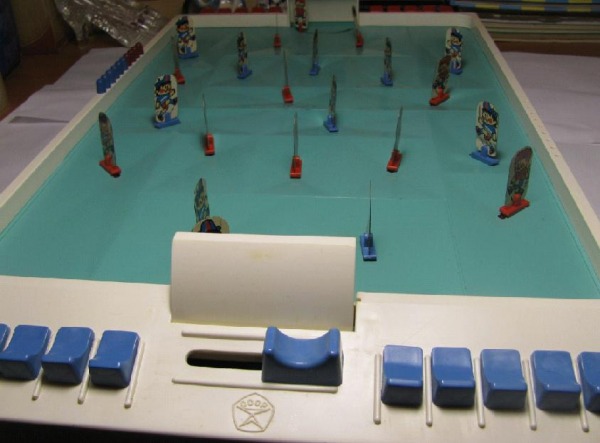

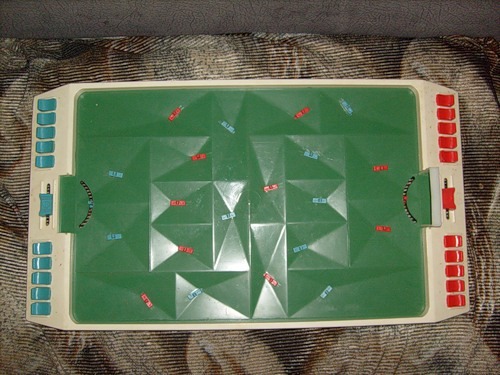
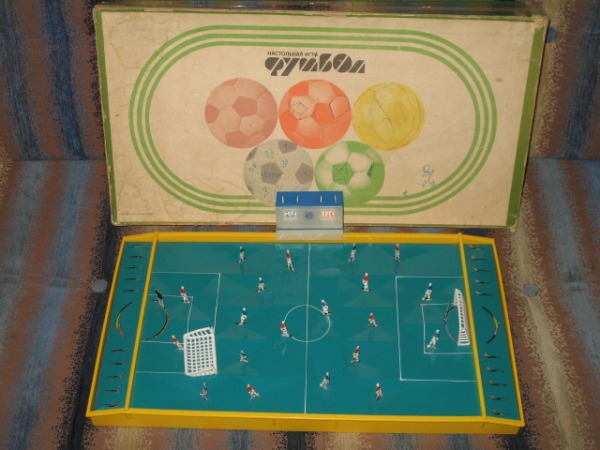



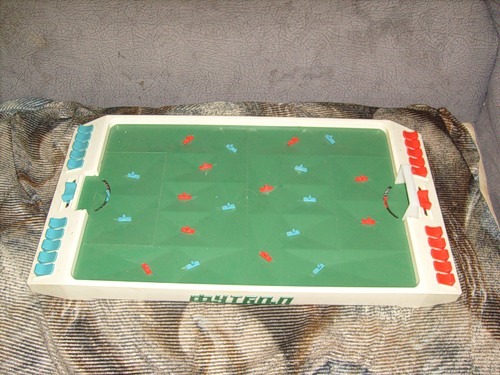
And here is another kind of battery-powered football. I honestly have never seen one, so I don’t know the principle of management.
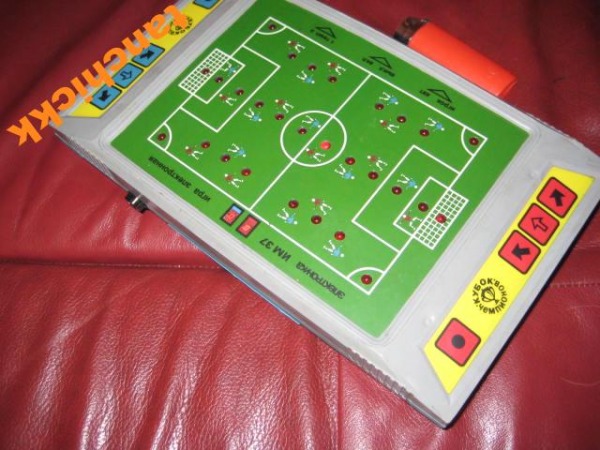
Another of the most exciting games of the time was the game "Helicopter".
With the help of the control panel, the flight of a toy helicopter model with a mandatory landing was simulated. The skill consisted in the precise landing of a helicopter.
Unfortunately, I did not have such a game, and I just enviously played it at one of the house homies. Impressions were cosmic.

Cool toy
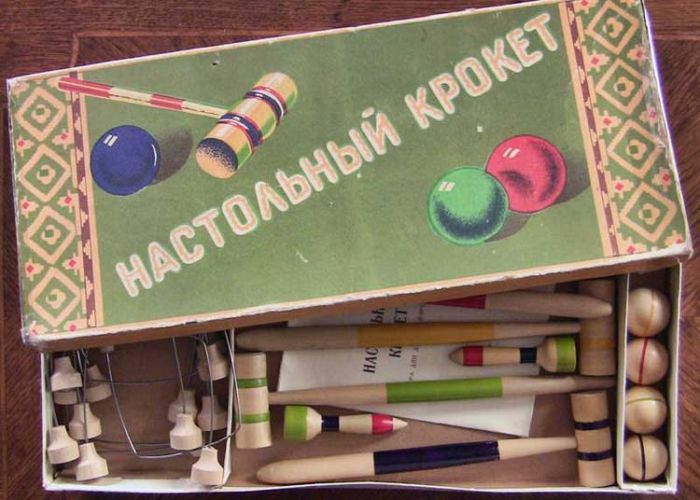
Board games were popular in our country both with kings and with general secretaries. But if with kings, games were just games, a means to pass the time, then in Soviet times they began to bear educational and propaganda load. But let's look at Soviet board games in more detail ...
"Flight Moscow-China". (1925) In the 1910s and during the First World War, airplanes were built in our country, but our country was not part of the elite club of leading aviation powers. Why? Well, for example, here is one of the reasons - everyone knows that the plane does not fly without an engine, and engine building was in rudimentary state in Tsarist Russia. And the most important "detail" for the Russian aircraft had to be bought abroad. The new government decided to put an end to technological backwardness. The slogan "catch up and overtake" came into use closer to the end of the twenties - in the era of industrialization. But the joint-stock company Dobrolet (Russian Joint-Stock Company of the Voluntary Air Fleet) appeared already in 1923. 
The goal of the founders of society was to promote the development of domestic civil aviation - passenger, postal, cargo. Society lasted 7 years. During this time, the Dobrolet aircraft flew almost 10 million kilometers, transported 47 thousand passengers and 408 tons of cargo (a very good result for an airline of the twenties). It also advertised Dobrolet’s activities with the help of board games. The game "Flight Moscow-China" is extremely simple - throwing dice, players must get to Beijing as quickly as possible, departing from a Moscow airfield. "Electrification" (1928) "Communism is Soviet power plus electrification of the whole country" - said V.I. Lenin. The words of the first head of the country by the Council did not disagree with the case. In February 1920 the GOELRO plan (the State Electrification Plan of Russia) was adopted. The result of this plan was the widely publicized “light bulbs of Ilyich”, which ignited even in the most remote villages of our immense country. Of course, the "electrification of the whole country" could not help but find a mapping in board games. 
Two to four players could play "Elitrification". It offers players large and small cards with pictures. There are only four big ones - a village, a city, an aul, a port. These cards are divided between players - these are the objects that they need to electrify. Small cards are shuffled and distributed to players. Players draw cards from their neighbors and lay paired pictures. In the end, they should have no pictures with electric bulbs left. The number of such cards on the playing field opens the closed field - electrified objects. The one who electrified his part of the playing field first was the winner. "Let's give raw materials to the plants" (1930) 1930 - the First Five-Year Plan is in full swing, industrialization is underway, the giants are being built in the country, huge industrial plants are emerging from scratch areas. Of course, they could not ignore the topic of industrialization and manufacturers of board games. 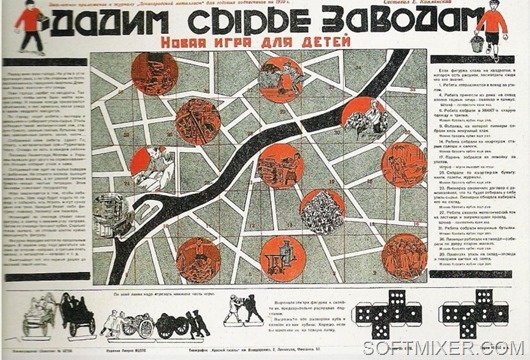
In the game "We will give raw materials to the plants", players had to throw cubes, move around the playing field and collect various recyclables, which will be recycled in game factories. The one who gave the factories more raw materials, of course, won. "Lenin goes to Smolny" (1970) And now, from the twenties to the thirties, let's fast forward to the era of "developed socialism." In April 1970, our country celebrated the centenary of the birth of the leader of the world proletariat, V. I. Lenin. The children's magazine "Funny Pictures" could not stay away from this festival. The game "Lenin goes to Smolny" was published on the pages of the magazine in the "anniversary" April issue. The game was a classic "labyrinth" - the players had to spend Ilyich on the historic night from October 24 to 25 in the old style from a safe house in Smolny. 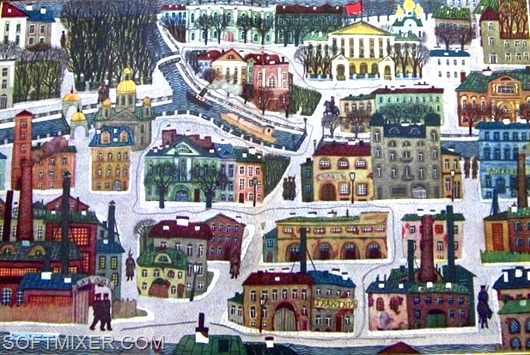
Night Petrograd was full of dangers — patrols, mounted junkers. However, for many players, a walk through the nightly pre-revolutionary Peter seemed boring to do, and almost immediately a “multiplayer version” of this game appeared. There were already several players and Lenins, and the player whose Lenin got to Smolny first was victorious. The board games in the first decades of the Soviet regime were both a means of propaganda and a kind of means of pre-conscription training. And there is nothing wrong with that. In the twenties, our country was preparing to repel a new intervention (breaking diplomatic relations with England, Curzon ultimatum, "military alarm"). After January 30, 33rd, there was no need to be a great visionary or a genius analyst to guess the new world war inevitable (it was enough to read two hundred pages tangentially of the text of the Versailles Treaty or read its summary in the newspapers). So, the desktop military-patriotic propaganda, designed for future soldiers and commanders, was not at all superfluous. One doesn’t have to be surprised at the abundance of wargames (war games or just desktop strategies) that came out in our country in the twenties and thirties. About the rules of these games will not be extended for a long time - “wargame” it is “wargame”. Look better at the scanned game boxes. 


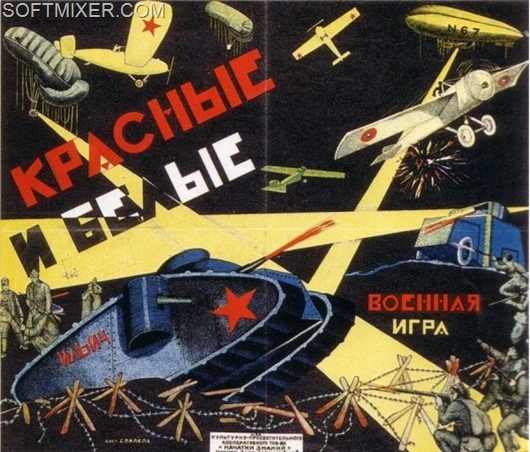

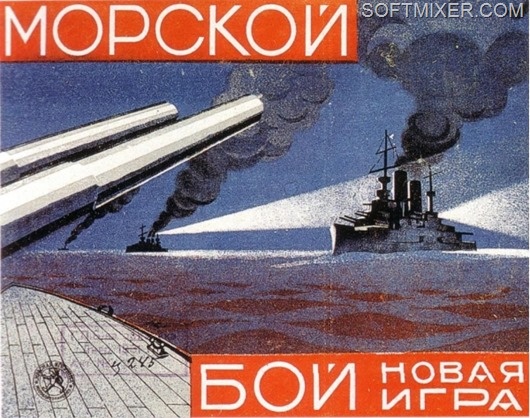
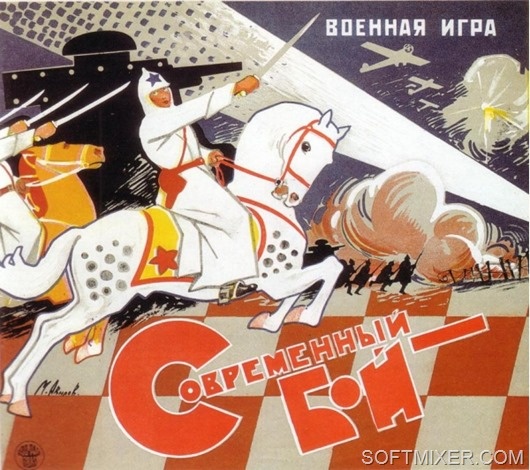

Board games were popular in Tsarist Russia and the Soviet Union. Many games turned out to be long-lived - after the change of power and state system, they changed only the name and design, and the "gameplay" remained unchanged. But in 1985, in our country, power changed once again and the so-called "perestroika" began. Together with party and government policies, board games have changed. So, the games of the era of perestroika. "Enchanted Country" In 1970, the Americans Gary Gyugex and Dave Arneson released the first board game from the endless series of Dungeon & Dragons (or D & D for short - Dungeons and Dragons). Players entered the world of heroic fantasy, and entered mighty warriors, wise magicians, immortal elves and other heroes of popular at that time books on worlds ruled by sword and magic. 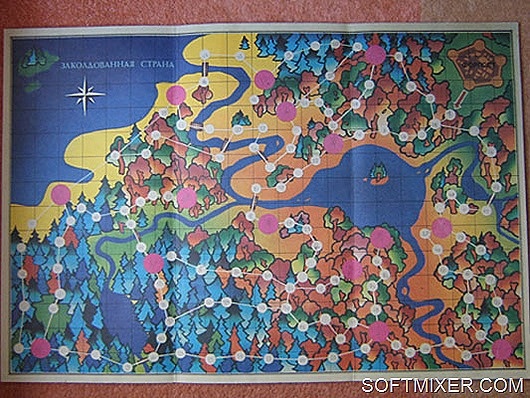
Map of the Encoded Country In the Soviet Union, such a historic event as the birth of D & D passed unnoticed. Board role-playing games in our country were not popular (from the role-playing games we enjoyed popularity except the field game Zarnitsa in the pioneer camps). The reason for this unpopularity is simple - the complete absence of board-based role-playing games. The citizens of our country could only become acquainted with something similar to D & D in 1990, when the Autumn Cooperative published 40,000 copies of the Enchanted Country board game. The game was a free variation on the very first and simplest variants of "Dungeons and Dragons". 
There is a playing field with locations, there is a leading book with a detailed description of what awaits players at these locations, there are characters that players can play, there are cards with monsters and their "tactical and technical characteristics", and finally there are cubes, with the help of which the outcomes of the game fights were decided. The game instantly gained a "cult" status - traveling along the "Enchanted Country" attracted a great many. Like many other things in the last years of the USSR, the game belonged to the category of "deficit" (then not only board games were a deficit, but also many food products). But those who got acquainted with it, literally made their versions of the game on their knees . In many respects, it was thanks to the “Enchanted Country” that role-playing movement originated in Russia. The famous Monopoly, created in America at the height of the Great Depression, instantly became a sales hit all over the world. oligarch (this game was especially relevant at the beginning of the thirties, at the very height of the biggest crisis in the history of the world economy - in America, the richest country in the world, millions of people were left without livelihoods). But Our country had a socialist planned economy, crises did not affect us in any way, but Monopoly in no way corresponded to the "general line of the party." The first Soviet desktop economic simulator was "Conversion". 
In the last years of the Soviet Union, the word "conversion" was very popular. Translated from Latin, it means “conversion” or “transformation.” First of all, at that time, they talked about conversion in the military industry — the conversion of military factories into factories producing purely peaceful products. And then we have a lot of missiles, airplanes and tanks, and, for example, there is little household equipment. We will not talk about how this conversion was carried out - this is a topic for a separate highly politicized article, let's talk about the game. When you first look at the game box, it becomes clear another meaning of the word "conversion". Yes, it is clear to everyone that we are talking about the convertibility of the ruble. In the history of the Soviet Union there was a convertible currency - gold coins secured with gold (and the gold exchange rate on international currency exchanges sometimes almost caught up with the British pound sterling). But by the time the "Conversion" was released, there was one monetary unit in the country - the ruble, which was called "wooden" at that time, because outside our country it was impossible to buy anything for rubles. No, again, we will not talk about whether it is good or bad when the national currency is convertible and can easily be taken abroad. Let's talk about the game. 
The playing field This is not a clone of "Monopoly", but a completely independent game. Play a few people. One of the players assumes the duties of a banker - distributes start-up capital to the other players. The banker's obligation is called "voluntary and disinterested" in the rules of the game. But according to the same rules, the banker in the game is not completely disinterested - during any of the moves, he can give any player a loan at a predatory percentage - took 100 thousand, return 150 thousand on the next move. Starting capital can be spent on the purchase of raw materials, factories, transport means. And in the future to engage in the production of goods, extraction of raw materials or transportation of raw materials or goods. Everything produced or extracted from the land can be sold either on the domestic market for rubles, or on the outside - for dollars (there was also an opportunity to change rubles for dollars at the game rate). During each of the moves, the player must perform one of the actions - buy, sell, send the goods to the customer, take a loan. Whether the Russian oligarchs who regularly make up Forbes magazine’s billionaires played in “Conversion” is not known for certain. 
This is how the USSR domestic market looks like in the game. 
And so in the game looks like the American market, where you can come with your product "Glasnost" Perhaps this is the first case of publication in our country "licensed" and "localized" games. Let not yet computer, but desktop (the very idea that computer games have any copyright holders out there who want some money would have seemed ridiculous to citizens of our country in the late eighties). 
Board game Glasnost was released in America in 1989. At that time, everything connected with the Soviet Union was popular in America. It cannot be said that the "Soviet" theme had not previously emerged in American board games, films, cartoons, comics. But during the Cold War, from the point of view of the Americans, Soviet Russians were brutal villains, ruthless bloodthirsty aggressors, dreaming of domination of the world and mass unjustified repression. If in 1984 the Red Dawn film was a hit film about the brave American teenagers who organized the partisan detachment in the territory occupied by the Soviet invaders, in 1988 the “Red Heat” film was a hit movie in which a purely positive image Soviet policeman embodied on the screen itself Arnold Schwarzenegger. 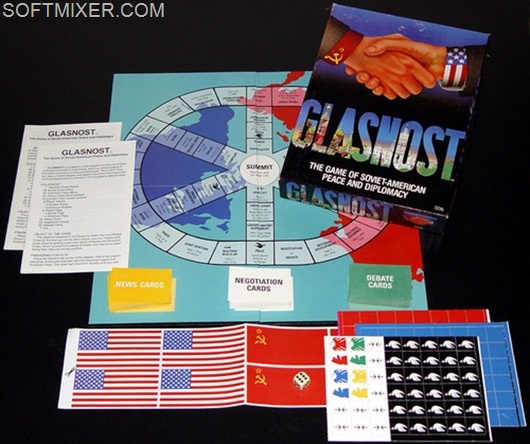
The Glasnost game was precisely dedicated to establishing peaceful political and economic relations between the two superpowers. The players had to get into the role of leaders of the Soviet Union and the United States, hold political debates, and enter into economic transactions. The political and economic aspects of the game were influenced by cards with news about what is happening in the world, in the Soviet Union and in America. Players had the opportunity to really build equal partnerships between America and our country, without giving up one position after another, as made a "non-player" Gorbachev. The game was promptly translated into Russian and published in our country in large quantities. Now, this game has been long and firmly forgotten on both sides of the Atlantic - the Soviet Union ceased to exist, and board games about it have become irrelevant. And lastly: A selection of photos of Soviet board games and designers of different years 
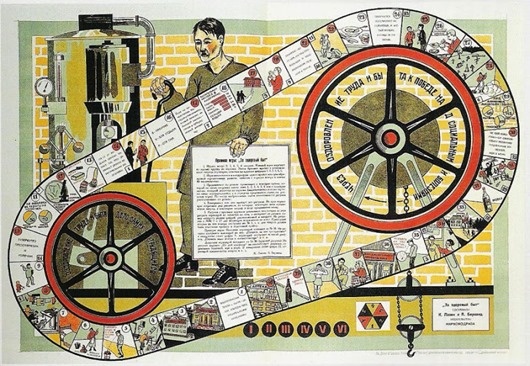

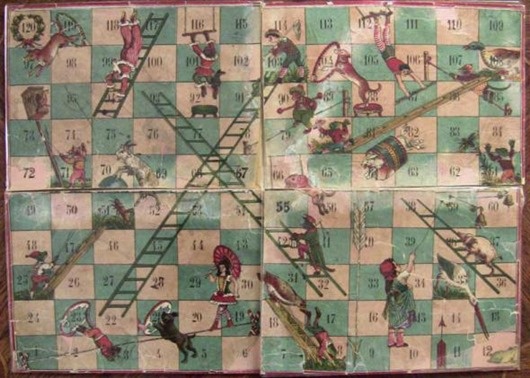
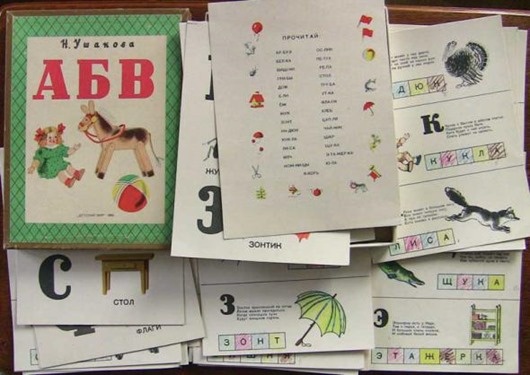

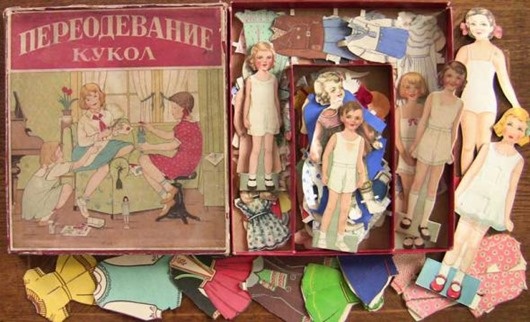
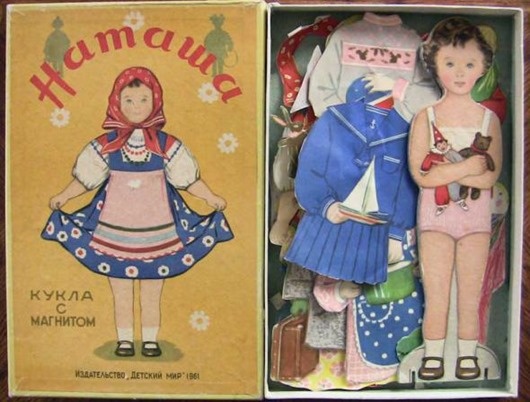
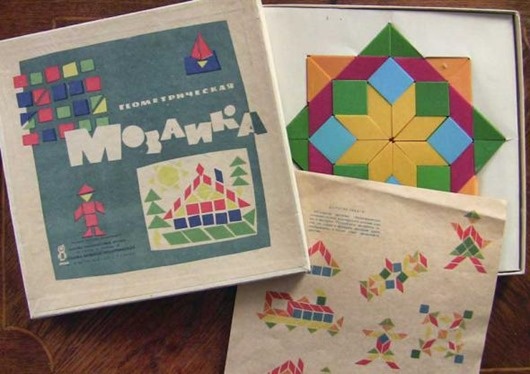

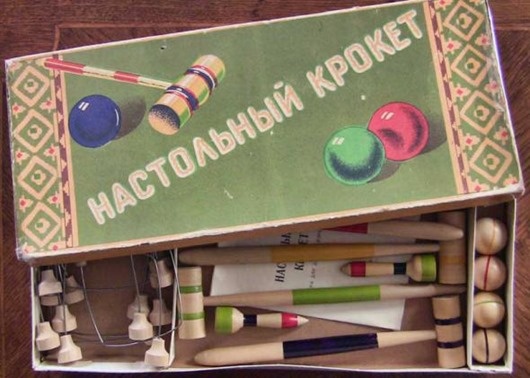
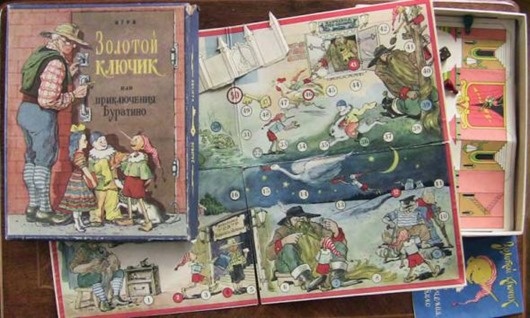


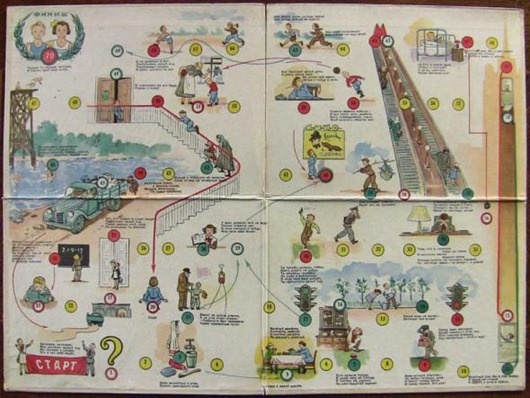

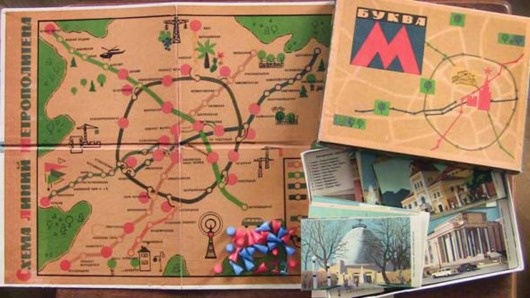
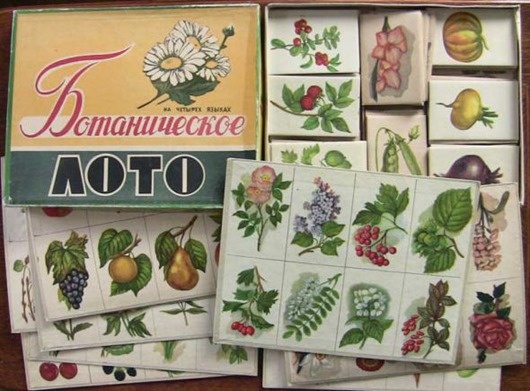
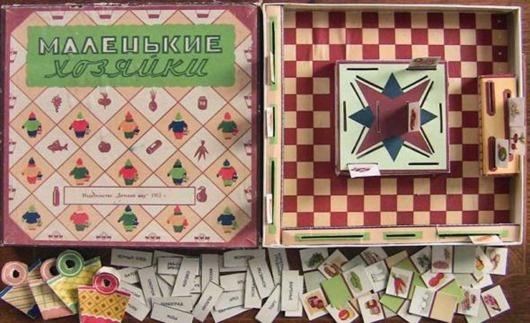

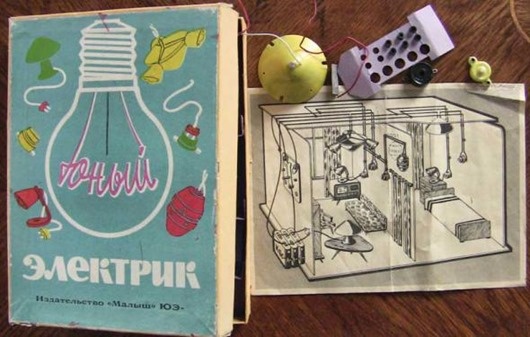


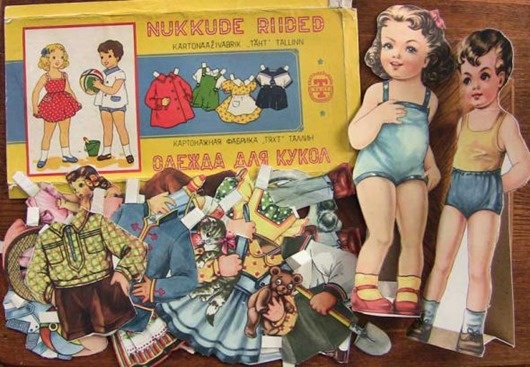

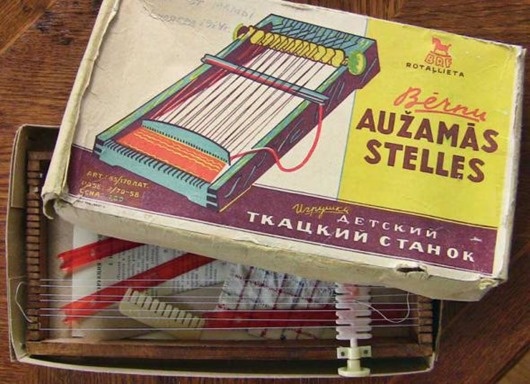
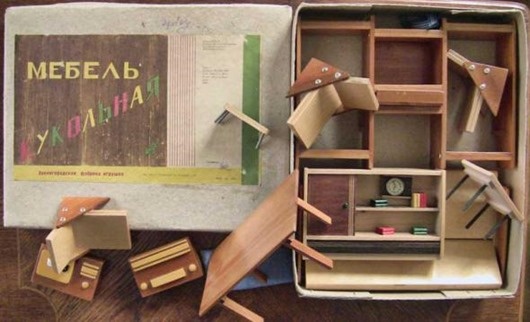

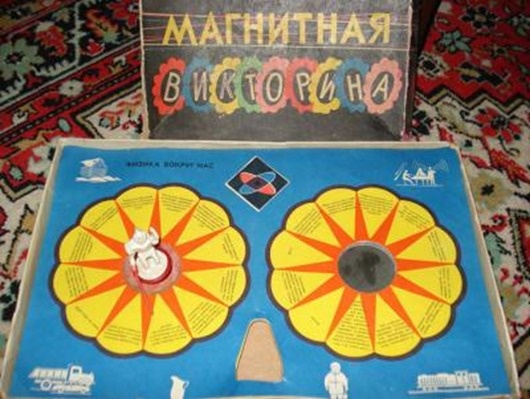
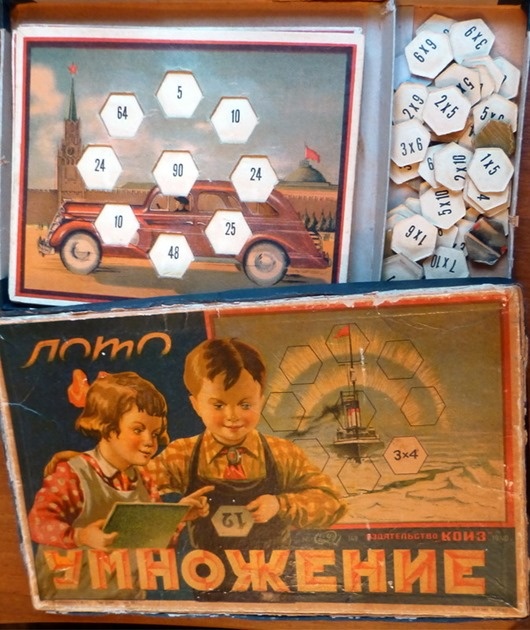
About any old nastolka, including more than a century ago. Some of them already flashed on the site, but that's okay.
Hearing such a question, modern ladies are unlikely to understand you correctly. Meanwhile, “puzel” in tsarist Russia meant no more, no less than ordinary “puzzles”. Board games were popular in our country not only in the twentieth, but also in the nineteenth century. And the assortment of toys was rich and diverse. Games for every taste. Having survived three revolutions and the Civil War, many of these toys were republished under Soviet rule. Let's see what our great-great-grandparents played ...
Before you just the game "puzzles". Country of origin - Russian Empire, year 1830, "Harvest". Then the puzzles were called “puzzles”. Puzel - puzzle, in German style. And it was not puzzles that were folded, but puzzles!
In the USSR, puzzles have never been released ...
The game "Sea Battle" everyone knows. But 100 years ago, in 1910, they played Air Combat. Cast chips, case - leather, wood and velvet. Done thoroughly!
Wolf and Sheep. 1884
Wolf's Lair is located in the center of the field. But unfortunately, the orderly of the forest chose the place for the den not the most successful one. Around dog kennels and guards with watchmen. But there are sheep farms, and there are delicious sheep. The task of the Wolf is to eat all the sheep, the task of all the others is to drive the Wolf into a corner.
The first of the participants plays for the Wolf, the second - for the Watchmen, the third - for the Dogs, the fourth - for the Sheep (they stand still, so you can play the three of us). At the beginning of the game, the chips are placed on the corresponding patterns at the corners of the field; possible directions of moves are stipulated by the rules. The goal of the game for the Wolf is to sneak into the sheepfolds and eat all the Sheep. If the Watchman and the Dogs manage to “lock” him and he cannot make further moves, the Wolf loses.
"Hunting with borzoi". 1890
One player "controls" two foxes and three hares, the other - four greyhounds. "Starting position" greyhounds located at the hunting lodge. The task of the animals is to run away behind the house, the task of the greyhounds is to bait either two foxes or two hares and one fox.
The game was played with the help of special circles that were inserted into the holes on the playing field. And then, on the circles they pressed on with a wooden stick and, having slipped out, they rushed forward along the playing field.
And here are some hodilok-trips:
"Travel on the Nikolaev railroad". 1857
"Journey to Russia". 1885
The goal of the game is to make the railway journey from Odessa to Moscow and back faster than others. You can go either through Kharkov and Kursk, or through Kiev and Smolensk, but, having reached Moscow one way, you need to return to Odessa by others.
The player receives the locomotive and moves it to as many stations as points on the dice. By means of brands (they are, for example, nuts), players buy their tickets and pay for various travel expenses.
"To Paris for the exhibition. A new interesting game for children and adults." 1900
Players will have to reach the capital of France, where the 1900 World Fair is being held.
The number of players is from two to six and more. Players are given an equal number of marks, of which they pay to the cashier for the ticket and baggage. Each participant receives a locomotive and, throwing the dice and taking into account the number of points ejected, moves according to plan.
"Newly Invented Game Mail or Journey to the City." 1849
Before us is the “Newest entertaining game in the gusek” 1882.
Who are the jibs to play? Yes, anyone. The name comes from the word "single file" - to follow each other. Players move on the playing field for the number of numbers that will fall on the dice.
According to the rules, on some numbers the player either misses a move, or returns to the starting point, or pays a “game” penalty. The winner is the one who first came on the field with the number 36.
"Konek Gorbunok" 1876 - one of the varieties of the above-described "Goose". The main difference from the previous version is the presence of a book with poetic texts.
Each sector of the playing field corresponds to a poem, which indicates the actions that the player needs to take - will move to the field with such and such number, pay a certain amount of game money to the gaming cash register, etc. In a word, everything is the same, just decorated differently .
The player rolls a dice and, by the number of points dropped, moves his chip. Having found the verses with the corresponding number in the accompanying booklet, he determines what he will do, for example: “Not in heaven, - on earth / There lived an old man in one village. /<…> Here on the first pores / You get three marks, / In the second square go. "
"Tote or Horse Racing with Obstacles" 1877
Hippodromes and sweepstakes at the end of the nineteenth century enjoyed in our country well-deserved popularity. And manufacturers of board games could not respond to the new fashion.
Six people take part in this game. An unlimited number of those who do not participate in the game can make bets according to all the rules of the sweepstakes (although, according to the rules, bets are made with play money). Players, as always, roll the dice and mix up the playing field.
In each sector of the playing field game events take place with them. For example, "the horse fell from fatigue" or "accidentally crushed a young lady." The player who came to the finish line first gets the entire gaming box office.
"Racing Cyclists." 1892g.
Approximately the same as the "Horse Race", but it is not about the horses, but about bicycles.
And this is the Soviet version of “Race,” dated 1928. Changed only the design and terminology, the rules remain the same.
But homemade panorama: 1875.
These two games are created according to the plots of the Crimean War:
"Theater of military operations in the Crimea or the Siege of Sevastopol in 1854 and 1855". 1855
“The historical game of the Battle of Sinop” 1855
"Garden of Wandering Reflections". 1859
"Catch up - you will drive from the place": 1902
The same game "Catch Up - Catch Up", released in the USSR in 1928.
"On a tightrope"
« Jew", - this game was published in the magazine" Tram "approximately in 1990. For the game you need two hex dice.
“Comic jump with obstacles” 1877
“Shooting range - shooting at the target, changing the picture”
“Croquet game” 1879:
“Soap Bubbles” 1888:
As you can see, our great-great-grandparents had something to occupy themselves in their free time. Not to mention other types of entertainment. Not having TVs, tablets and computers, they didn’t miss a bit ...
Board games were popular in our country both under the kings and under the general secretaries. But if, under the kings, games were just games, a means to pass leisure, in Soviet times games began to bear an educational and propaganda load. But let's look at Soviet board games in more detail ...
"Flight Moscow-China". (1925)
In the 1910s and during the First World War, airplanes were built in our country, but our country was not part of the elite club of the leading aviation powers. Why? Well, for example, here is one of the reasons - everyone knows that the plane does not fly without an engine, and engine building was in rudimentary state in Tsarist Russia. And the most important “detail” for Russian aircraft had to be purchased abroad.The new government decided to put an end to technological backwardness. The slogan "catch up and overtake" came into use closer to the end of the twenties - in the era of industrialization. But the Dobrolet Joint-Stock Company (Russian Joint-Stock Company of the Voluntary Air Fleet) appeared already in 1923.
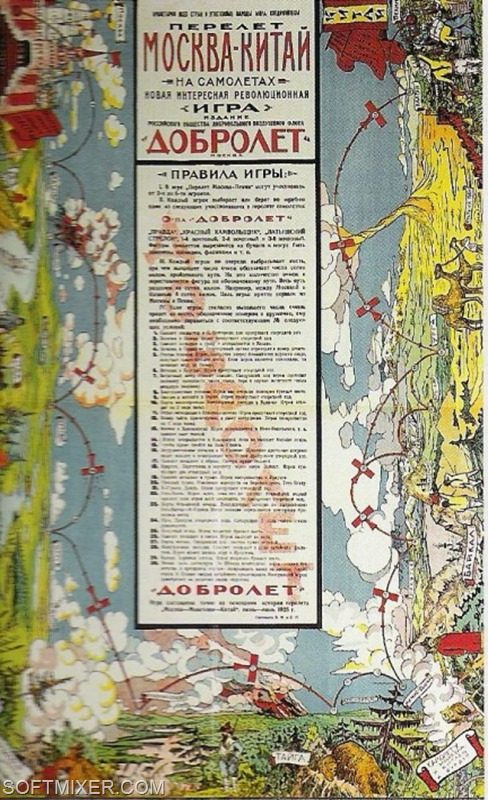
The goal of the founders of society was to promote the development of domestic civil aviation - passenger, postal, cargo. Society lasted 7 years. During this time, the Dobrolet aircraft flew almost 10 million kilometers, transported 47 thousand passengers and 408 tons of cargo (a very good result for an airline of the twenties).
Dobrolet also advertised its activities with the help of board games. The game "Flight Moscow-China" is extremely simple - throwing dice, players should get to Beijing as quickly as possible, taking off from the Moscow airfield.
"Electrification" (1928)
“Communism is Soviet power plus electrification of the whole country,” said V.I. Lenin. The words of the first head of the country by the Council did not disagree with the case.In February 1920, the GOELRO plan (the State Electrification Plan of Russia) was adopted. The result of this plan was the widely publicized “light bulbs of Ilyich”, which caught fire even in the most remote villages of our immense country. Of course, the “electrification of the whole country” could not help but find a reflection in board games.
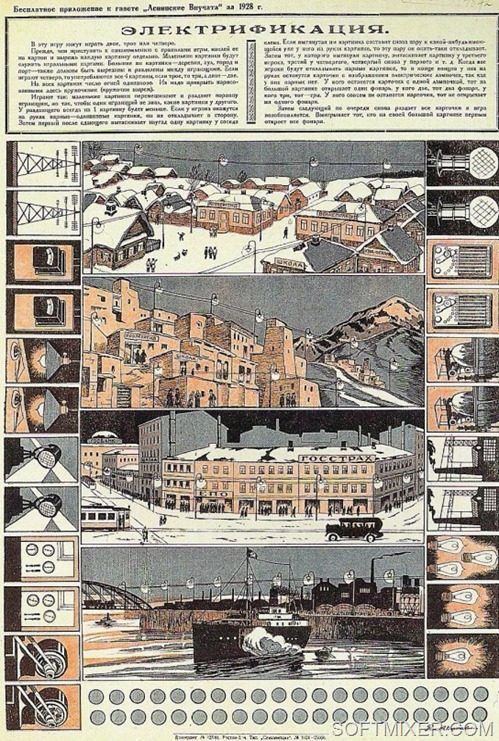
Two to four players could play "Elitrification". It offers players large and small cards with pictures. There are only four big ones - a village, a city, an aul, a port. These cards are divided between players - these are the objects that they must electrify.
Small cards are shuffled and dealt to players. Players draw cards from their neighbors and lay paired pictures. In the end, they should be left without a pair of pictures with light bulbs.
According to the number of such cards on the playing field open closed circles - electrified objects. The one who electrified his part of the playing field first, he was the winner.
“We will give raw materials to plants” (1930)
1930 - the First Five-Year Plan is in full swing, industrialization is in full swing, giants are being built in the country, huge industrial areas are emerging from scratch. Of course, they could not ignore the topic of industrialization and manufacturers of board games.
In the game “We will give raw materials to the plants”, the players had to throw cubes, move around the playing field and collect various recyclables, which will be recycled in game factories. The winner, of course, was the one who gave the factories more raw materials.
"Lenin goes to Smolny" (1970)
And now, from the twenties to the thirties, let's move on to the era of "developed socialism." In April 1970, our country celebrated the centenary of the birth of the leader of the world proletariat, V. I. Lenin. Could not stay away from this festival and children's magazine "Funny Pictures".On the pages of the magazine in the "anniversary" April issue the game "Lenin goes to Smolny" was published. The game was a classic "labyrinth" - the players had to spend Ilyich on the historic night from October 24 to 25 in the old style from a safe house in Smolny.
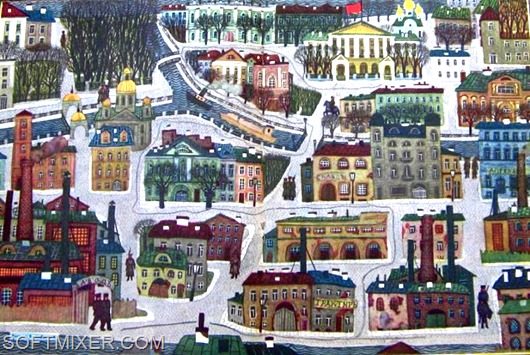
Night Petrograd was full of dangers — patrols, mounted junkers. However, for many players, a walk through the nightly pre-revolutionary Peter seemed boring to do, and almost immediately a “multiplayer version” of this game appeared. There were already several players and Lenins, and the player whose Lenin got to Smolny first won.
Board games in the first decades of the Soviet regime were both a means of propaganda and a kind of means of pre-draft preparation. And there is nothing wrong with that. In the twenties, in our country, they were preparing to repel a new intervention (breaking off diplomatic relations with England, the Curzon ultimatum, "military alarm").
After January 30, 1933, there was no need to be a great visionary or a genius analyst to guess that a new world war was inevitable (it was enough to read two hundred pages of the text of the Versailles Treaty or read its summary in the newspapers). So, the desktop military-patriotic propaganda, designed for future soldiers and commanders, was a matter of no harm.
It does not come as a surprise to see the abundance of “wargames” (war games or simply board strategies) that came out in our country in the twenties and thirties. We will not be spreading the rules of these games for a long time - “wargame” it is “wargame”. Look better at the scanned game boxes.
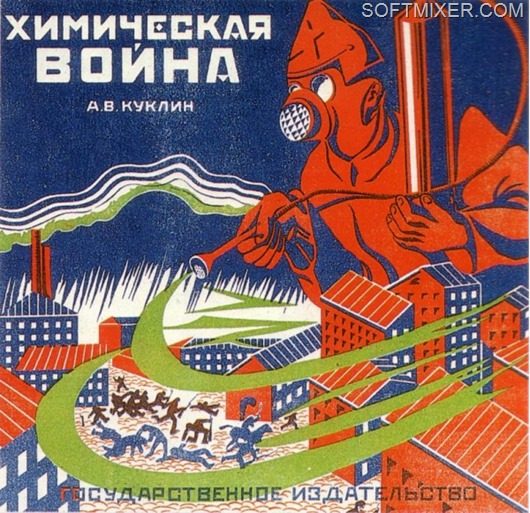

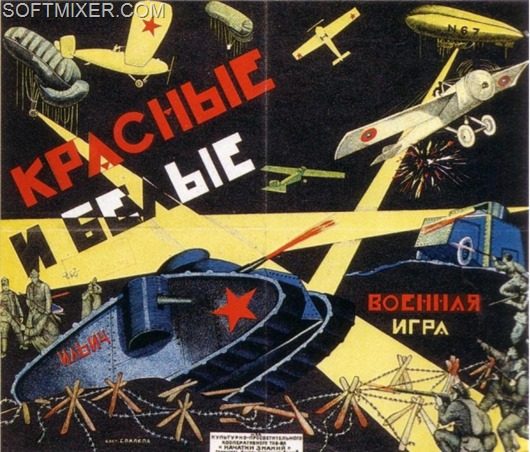


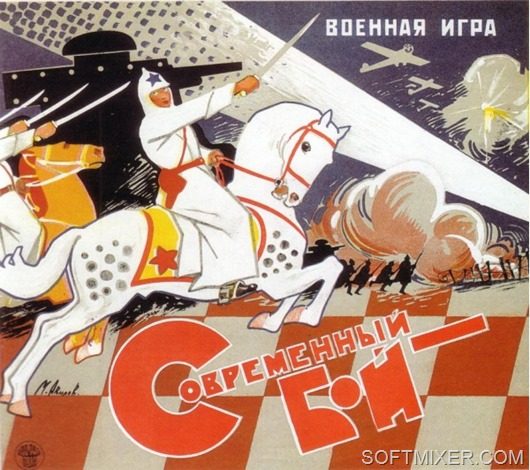
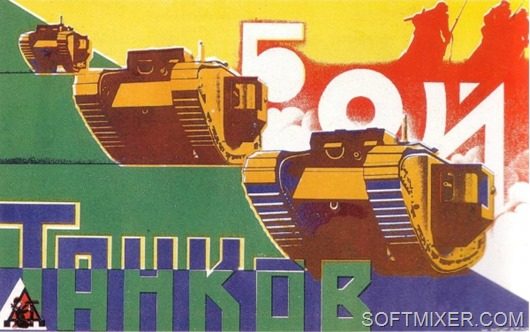
Board games were popular in Tsarist Russia and the Soviet Union. Many games turned out to be long-livers - after the change of power and state system, they changed only the name and design, and the “gameplay” remained unchanged.
But in 1985, power again changed in our country and the so-called “perestroika” began. Together with party and government policies, board games have changed. So, the games of the era of adjustment.
"Enchanted Country"
In 1970, Americans Gary Gygeks and Dave Arneson released the first board game from the endless series of Dungeon & Dragons (or abbreviated as D & D - Dungeons and Dragons).Players got into the world of heroic fantasy, and got used to the role of mighty warriors, wise magicians, immortal elves and other heroes of popular at that time books on worlds ruled by sword and magic.
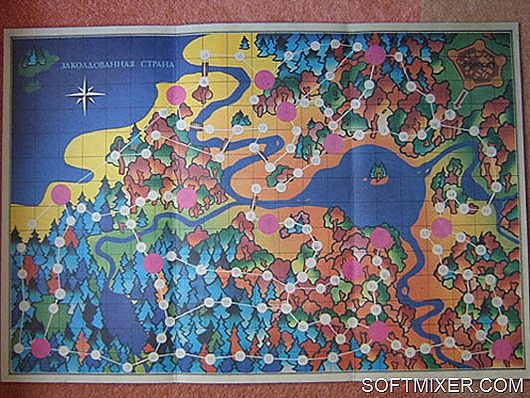
Map of Encoded Country
In the Soviet Union, such a historic event as the birth of D & D passed unnoticed. Board role-playing games in our country were not popular (of the role-playing games we enjoyed, except for the field game Zarnitsa in the summer camps). The reason for this unpopularity is simple - the complete absence of desktop role-playing games.
The citizens of our country could get acquainted with something similar to D & D only in 1990, when the cooperative "Autumn" issued a circulation game of "Enchanted Country" in 40 thousand copies. The game was a free variation on the theme of the very first and simplest variants of Dungeons and Dragons.

There is a playing field with locations, there is a leading book with a detailed description of what awaits players at these locations, there are characters that players can play, there are cards with monsters and their "tactical and technical characteristics", and finally there are cubes, with the help of which the outcomes of gaming fights were decided.
The game instantly gained "cult" status - traveling through the "Enchanted Country" attracted a great many. Like many other things in the last years of the USSR, the game belonged to the category of “deficit” (then not only board games, but also many food products) were a deficit.
But those who got acquainted with it, literally “on the knee” did their versions of the game. In many respects, it is thanks to the “Enchanted Country” that the role-playing movement originated in Russia.
Conversion
The famous "Monopoly", created in America at the height of the Great Depression, instantly became a bestseller worldwide.Still, everyone with the help of this game could feel like a tycoon or oligarch (this game was especially relevant in the early thirties, at the very height of the biggest crisis in the history of the world economy - in America, the richest country in the world, millions of people were left without livelihoods).
But in our country there was a socialist planned economy, crises did not affect us in any way, but Monopoly in no way corresponded to the “general line of the party”. The first Soviet desktop economic simulator was "Conversion".

In the last years of the Soviet Union, the word "conversion" was very popular. Translated from Latin, it means "conversion" or "transformation."
At that time, first of all, they talked about conversion in the military industry — the conversion of military factories into factories producing purely peaceful products. And then we have a lot of rockets, airplanes and tanks, and, for example, there is not enough home appliances.
We will not talk about how this conversion was carried out - this is a topic for a separate highly politicized article, let's talk about the game.
At the first glance at the game box, one more meaning of the word “conversion” becomes clear. Yes, everyone is clear that we are talking about the convertibility of the ruble.
In the history of the Soviet Union there was a convertible currency - gold coins secured with gold (and the gold exchange rate on international currency exchanges sometimes almost caught up with the British pound sterling). But at the time of the “Conversion” release, there was one monetary unit in the country - the ruble, which was called “wooden” at that time, since it was impossible to buy anything for rubles outside our country.
No, again, let's not talk about whether it is good or bad, when the national currency is convertible and it can be easily transferred abroad. Let's talk about the game.
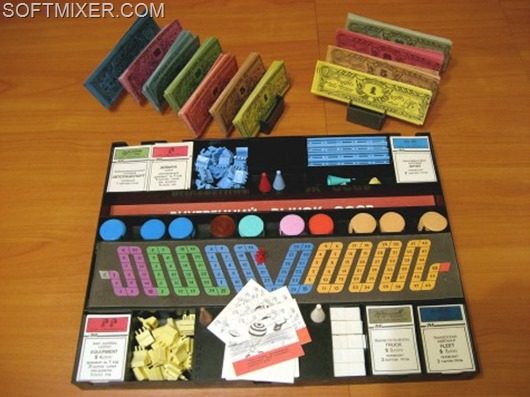
Playing field
This is not a clone of "Monopoly", but a completely independent game. Play a few people. One of the players assumes the duties of a banker - distributes start-up capital to the other players.
The duty of the banker is named in the rules of the game "voluntary and disinterested." But according to the same rules, the banker in the game is not completely disinterested - during any of the moves, he can give any player a loan at a predatory percentage - took 100 thousand, return 150 thousand on the next move.
Start-up capital can be spent on the purchase of raw materials, plants, vehicles. And in the future to engage in the production of goods, extraction of raw materials or transportation of raw materials or goods. Everything produced or extracted from the land can be sold either on the domestic market for rubles, or on the external market - for dollars (there was also the possibility to change rubles for dollars at the game rate).
During each of the moves, the player must perform one of the actions - buy, sell, send the goods to the customer, take a loan. Whether the Russian oligarchs who regularly make up Forbes magazine’s billionaires played in “Conversion” is not known for certain.
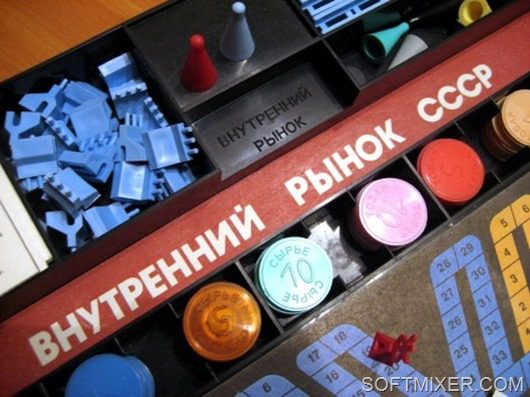
This is how the USSR domestic market looks like in the game.
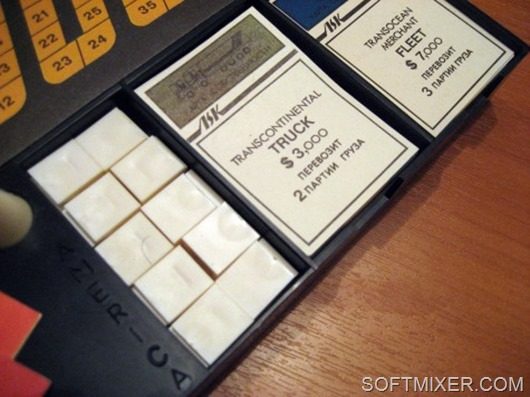
And so in the game looks like the American market, which you can come with your product
"Publicity"
Perhaps this is the first case of the publication in our country of a “licensed” and “localized” game. Let not yet computer, but desktop (the very idea that computer games have any copyright holders out there who want some money would have seemed ridiculous to citizens of our country in the late eighties).
Board game Glasnost was released in America in 1989. At that time, everything connected with the Soviet Union was popular in America.
It cannot be said that the earlier “Soviet” theme did not emerge in American board games, films, cartoons, comics. But during the Cold War from the point of view of the Americans, Soviet Russians were brutish villains, ruthless bloodthirsty aggressors, dreaming of domination of the world and of mass unreasonable repression.
In the years of “perestroika” for a short time, the image of Russians in American popular culture was replaced by “polarity”. If in 1984 the Red Dawn film was a hit film about the brave American teenagers who organized the partisan detachment in the territory occupied by the Soviet invaders, in 1988 the “Red Heat” film was a hit movie in which a purely positive image Soviet policeman embodied on the screen itself Arnold Schwarzenegger.
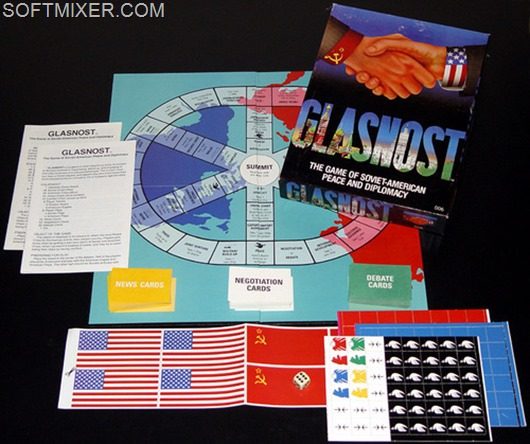
The game Glasnost was just dedicated to the establishment of peaceful political and economic relations between the two superpowers.
The players had to get used to the role of leaders of the Soviet Union and the United States, to conduct political debates, to enter into economic transactions. The political and economic aspects of the game were influenced by cards with news about what is happening in the world, in the Soviet Union and in America.
The players had the opportunity to really establish equal partnerships between America and our country, without giving up one position after another, as Gorbachev did.
The game was promptly translated into Russian and published in our country in large quantities. Now this game has been long and firmly forgotten on both sides of the Atlantic - the Soviet Union ceased to exist, and board games about it have become irrelevant.
And lastly: A selection of photos of Soviet board games and designers of different years
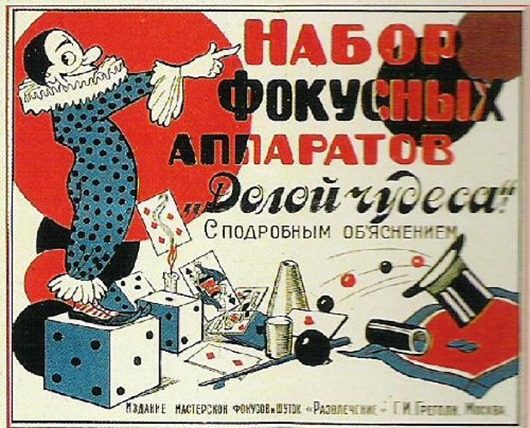

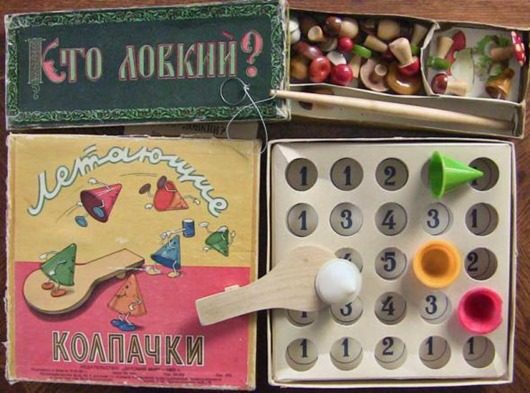
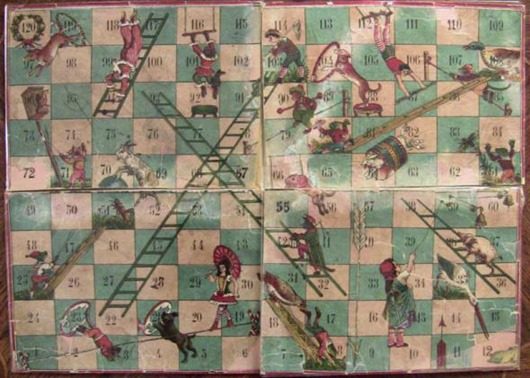

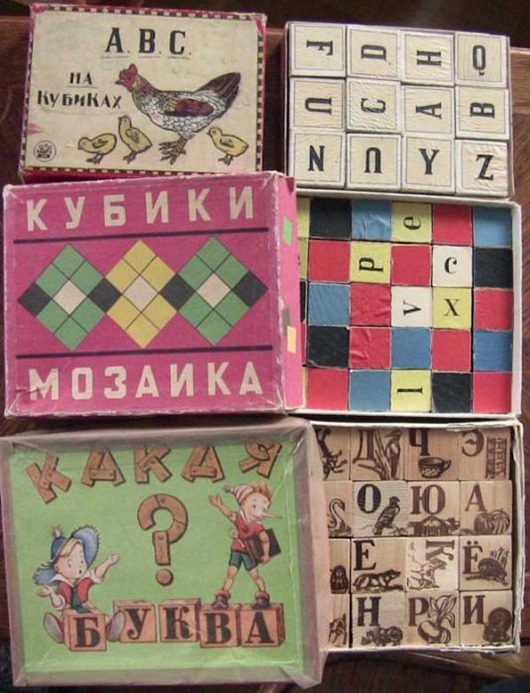



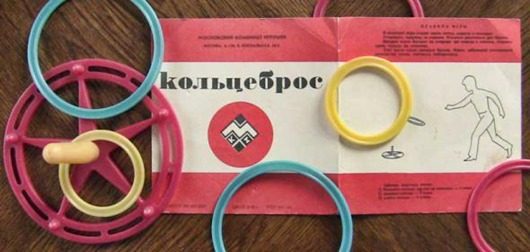

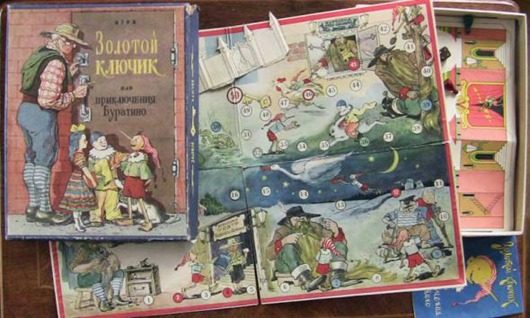
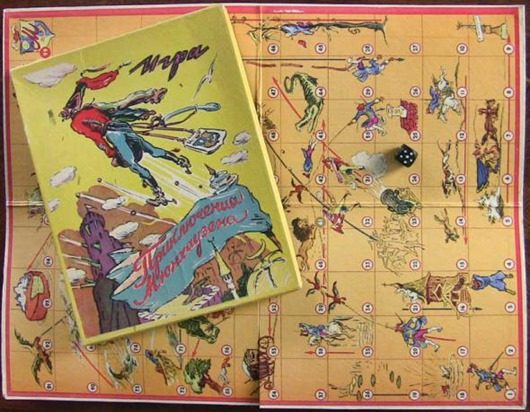
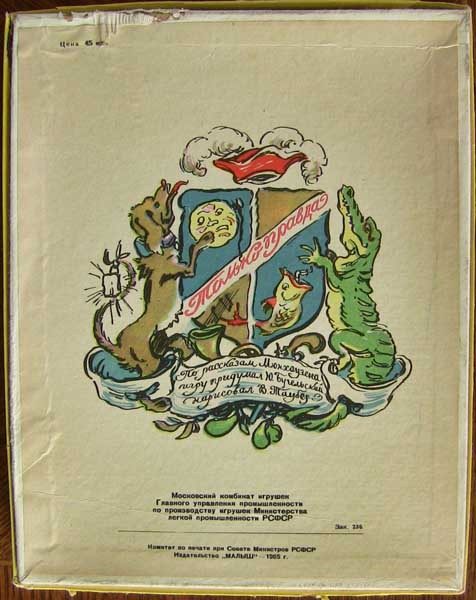
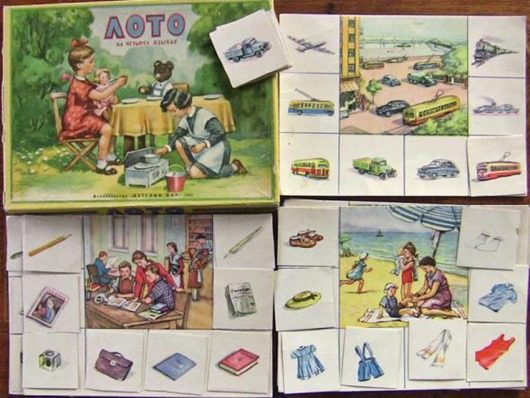

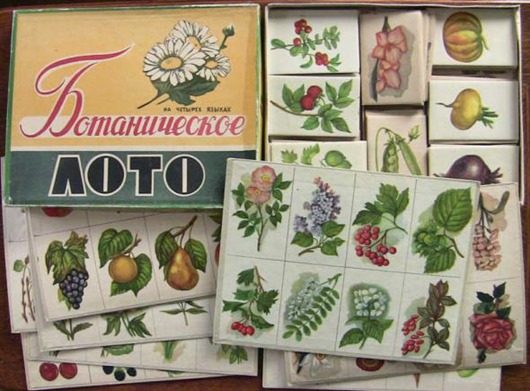


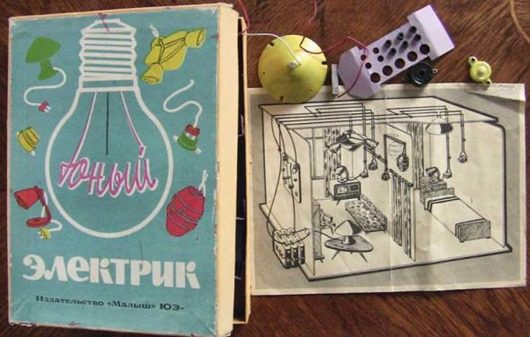
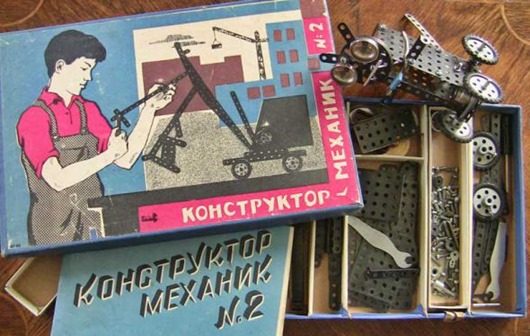
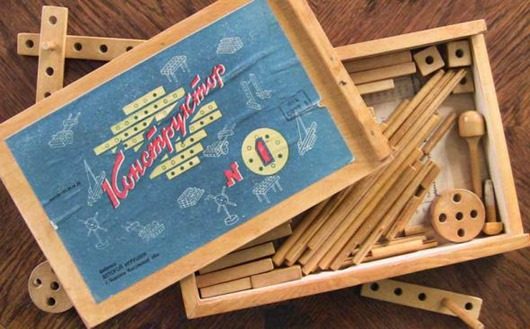
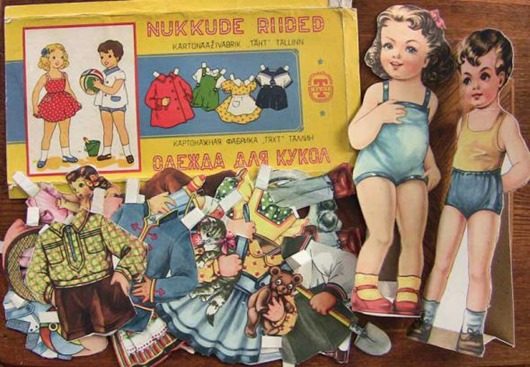

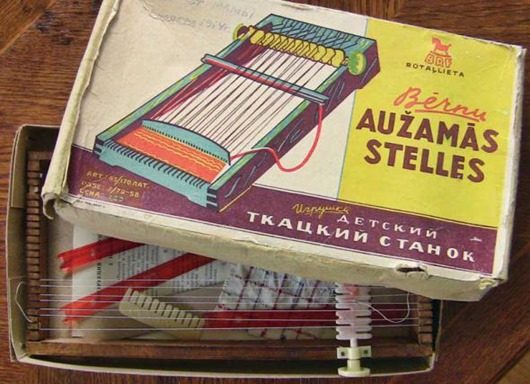
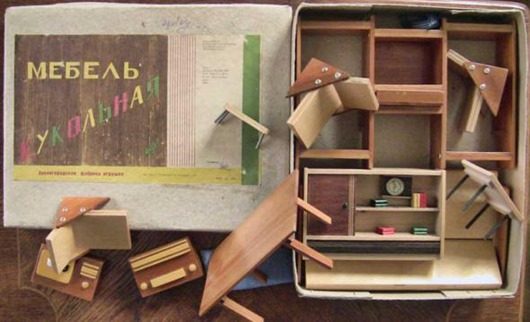

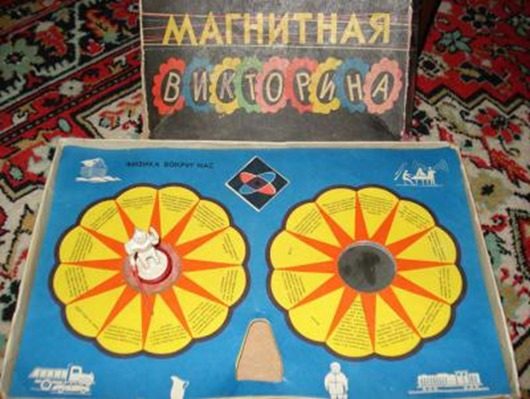

Now the phrase "board games" is associated mainly with throwing dice. Whether it is the simplest children's game “Who will reach the grandmother faster” or games for adults like “Munchkin” or “Monopoly”, participants everywhere roll the dice and perform actions depending on the number dropped out.
But in the days of our Soviet youth, there was a much larger selection of desktop fun. Playing many desktops required not only luck, but also agility, reaction and logical thinking.
How many boys gathered in the yard, arranging real table hockey championships! And how many ball shootings in the “Sea Battle”! Revision Ofigenno.cc invites you to plunge into childhood again and recall the most popular board games for which dice were not required to participate in.
Hockey
Perhaps the most gambling board game was just hockey. No wonder the same games continue to be released until now. The present hockey is much brighter and more attractive, but a wave of nostalgia rolls precisely at the sight of an old metal toy.
Let hockey sticks sometimes get stuck in the grooves and there were several zones from which the puck could only be reached by hand, as the toy sticks were a bit short, but everyone loved this game. Often, giving their child a “Hockey” for their birthday, the parents first of all accepted themselves to play it while the children enjoyed the cake at the sweet table.

Football
Unlike hockey, football table games were not so successful. Although they were produced completely different types. The most common was a game where spring-loaded figures stood in place. When the ball hit the figure of a football player of your team, you had to pull it off and let it go. Thus it was possible to strike or give the transfer. The disadvantage of such a game was a rather crooked field, so that the ball did not reach all the figures.
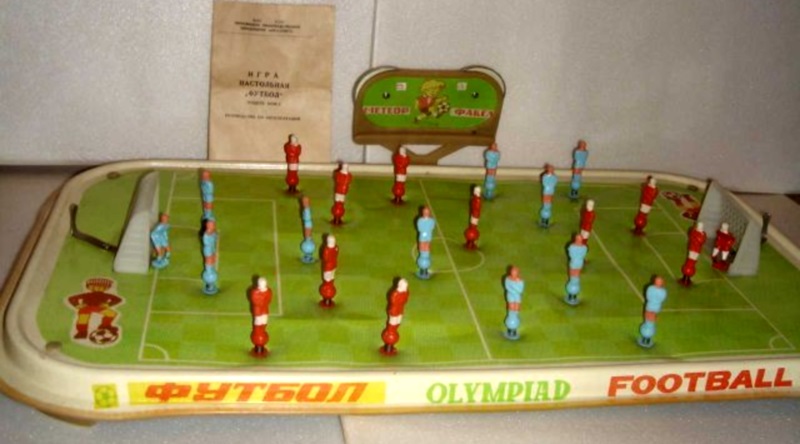
There was also a more advanced version of table football. There was no need to pull the figure with your fingers. And should pull the levers on its side of the game. On the reverse side of the field, cables were stretched to the figures, with the help of which the players beat the ball. The toy was fun and dynamic, but it was mostly the one that was defeated by the footballers, as it was almost impossible to change the direction of the blow.
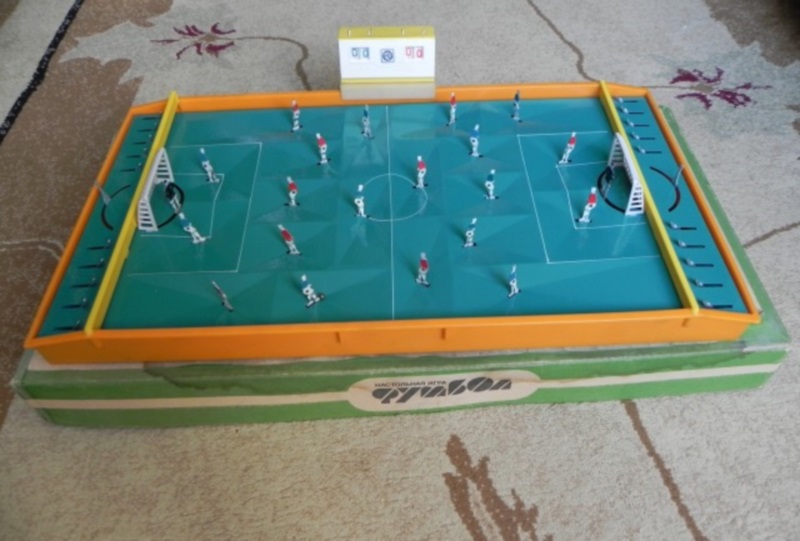
In another version of "Football" was not even the players themselves. There were only holes at the bottom of which there were two hammers: yours and the opponent. It was necessary when the ball rolled into the hole to have time to press the right key faster than the opponent. Then the ball flew in a certain direction. Playing with the newbies, it was decided to agree on the alternate pressing of the buttons: first you beat the enemy, then you struck back.

Basketball
"Basketballs" were also several varieties, the most popular of which was built exactly according to the same principle as the previous game "Football", only it was necessary to throw the ball in the basket. The game was very popular; in recreation parks in special pavilions there were similar slot machines of large size.
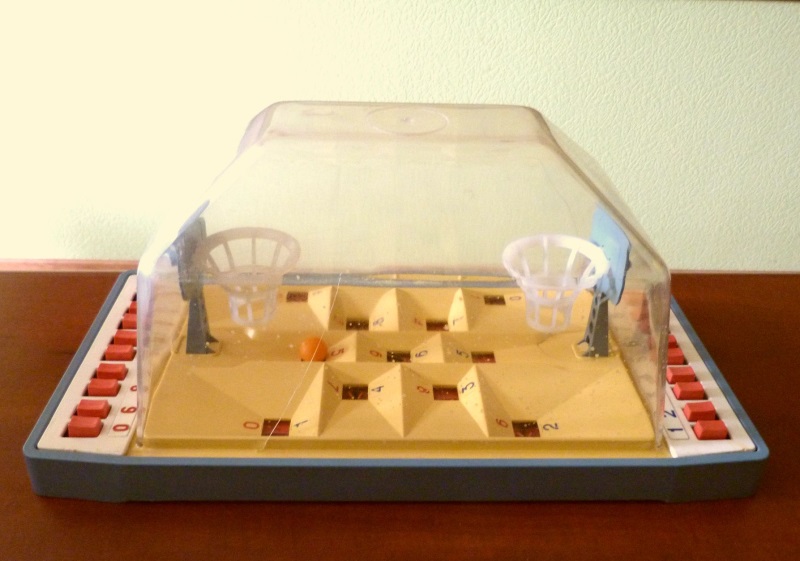
In the older version of the "Basketball" there was no transparent ceiling that did not allow the ball to fly away from the field. But such a game could be folded in a small box. The principle of the game was the same as that of the previous "Basketball", only for the strike it was necessary to pull the levers on the side.
![]()
Another type of "Basketball" squandered players in different areas. Here it was necessary to have time to throw more balls into the basket than your opponent. Here you could not prevent your opponent, but you could even play yourself.
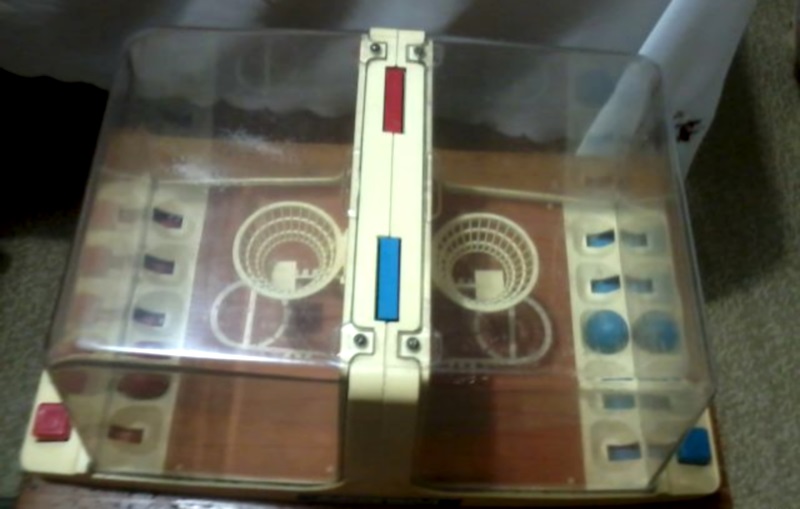
Sea battle
In "Battleship" was played not only in the lessons in notebooks in the box. There was a special electronic version of this popular game. The players sat opposite each other and put ships on the field. To make your move, you had to put a special piece on the adjacent field and press a button. At the same time, the sound of a torpedo shot was heard. If the charge was accurate, then the silhouette of the ship on the screen below glowed red, accompanied by the sound of an explosion.
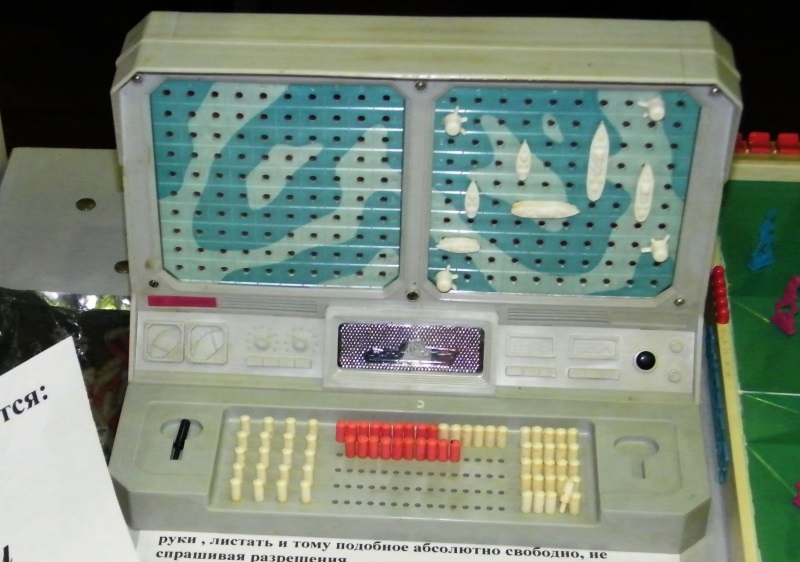
There was another kind of “Sea battle”, where it was necessary to physically sink the enemy ships, firing small balls at them. The ritual of aiming caused a special delight, during which it was necessary to rotate the gun, looking for the target in a special mirror.



